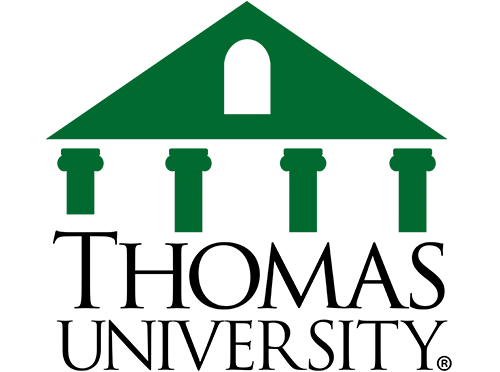TU’s Trip to Israel
Post Published On:+Travel to Israel
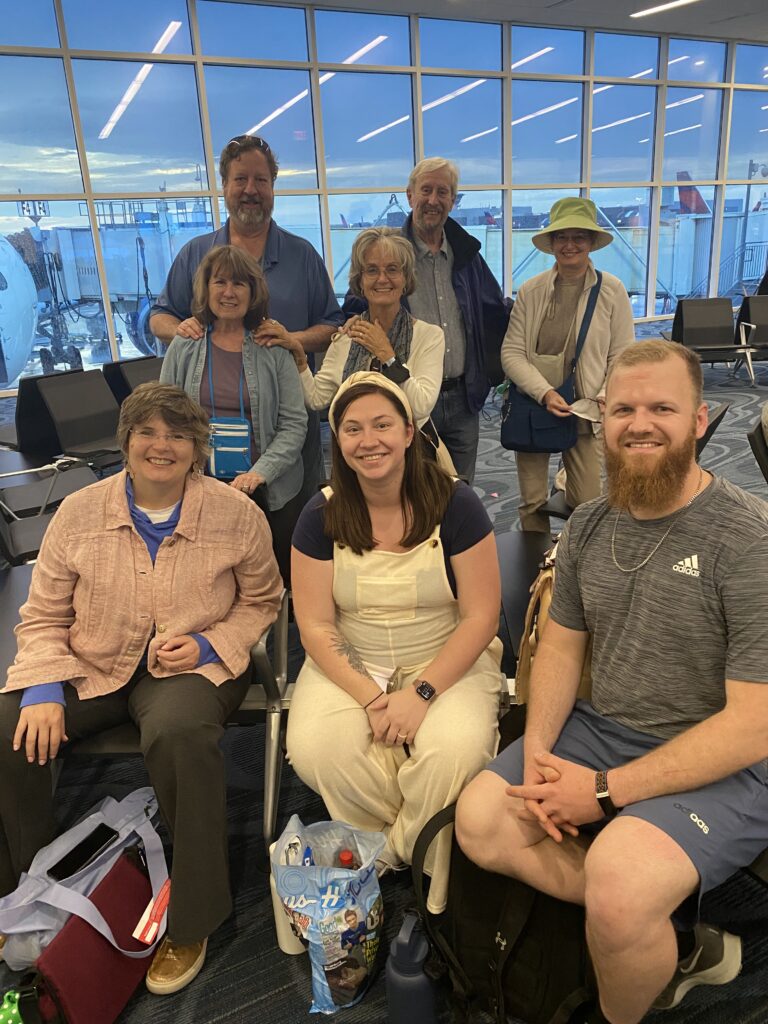
Here’s a picture of our group prior to boarding.
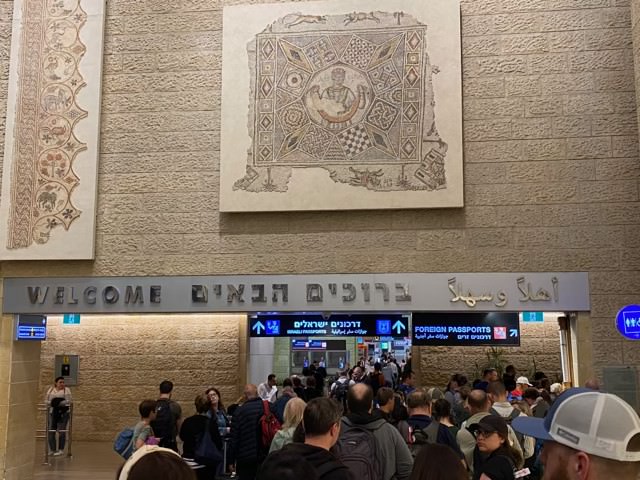
After a 4 hour layover in Istanbul and 18 hours from take off, we arrived in Israel.
+Jaffa and Caesarea
After spending an easy day in Jaffa recovering from jet lag, our group set out for Caesarea.
Caesarea was the capital of Roman rule in the Judea. King Herod the great built it in honor of Caesar in Rome. The temple and complex are massive with an amphitheater, palace, hippodrome, pool, harbor and more.
The religious significance includes an artifact called the Pilate Stone. The Pilate Stone has an inscription referring to Pontius Pilate who was the governor of Judah during the time of Christ.
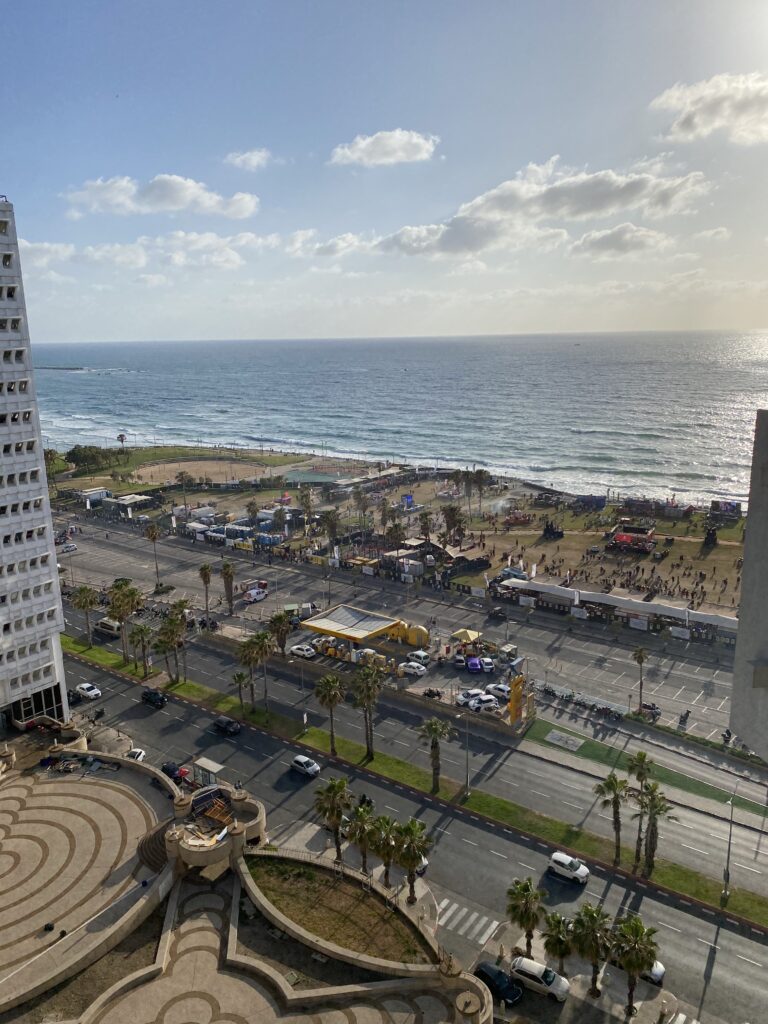 View from hotel in Jaffa
View from hotel in Jaffa
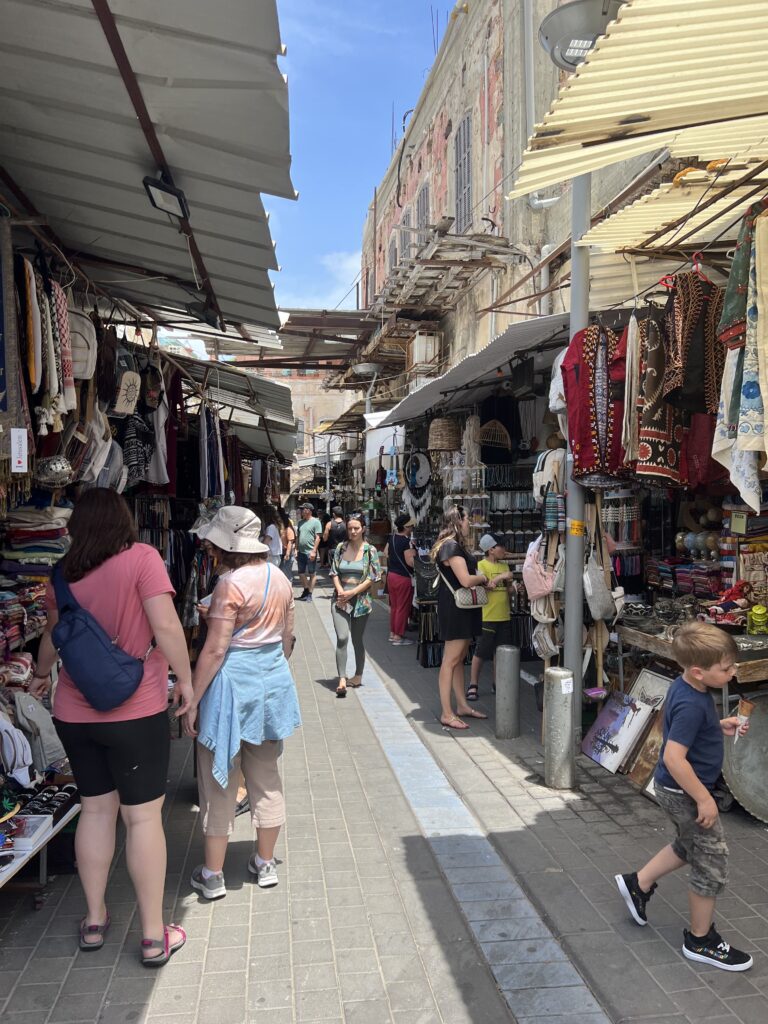
Shopping in Jaffa
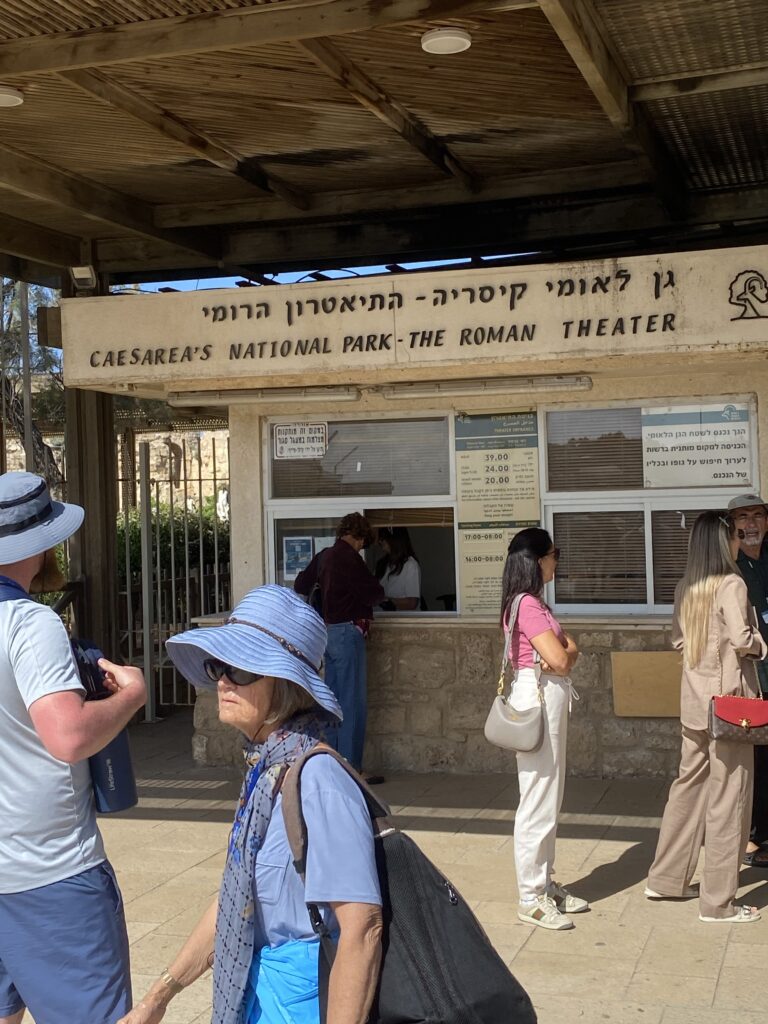 Entrance to Caesarea
Entrance to Caesarea
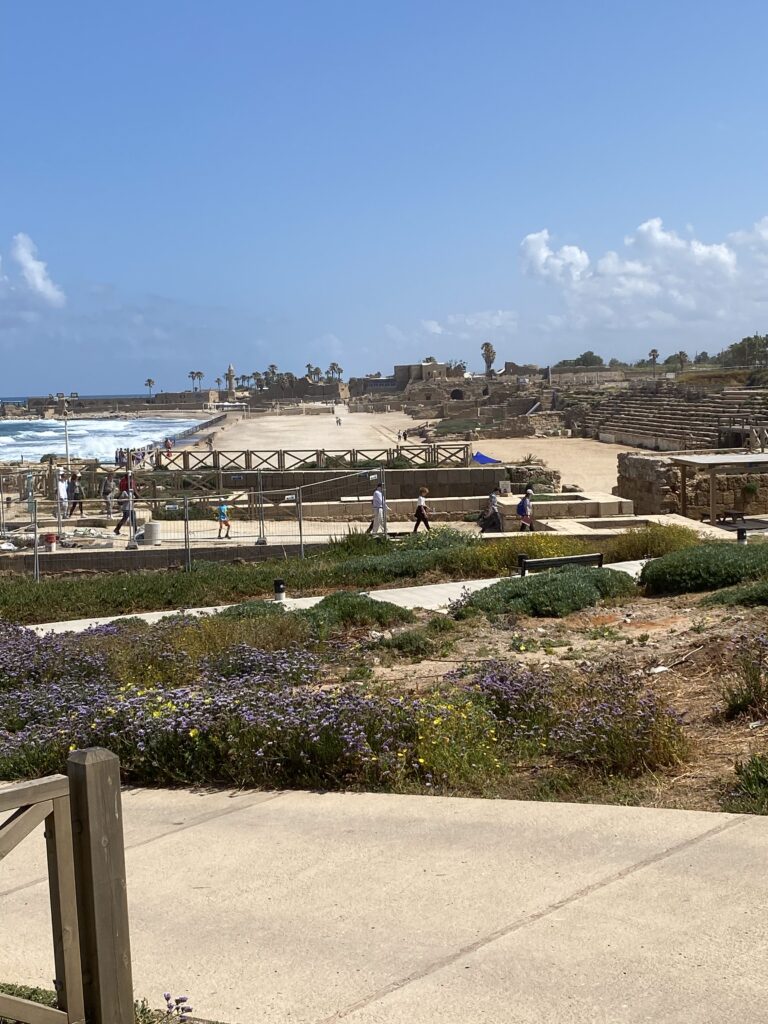 Caesarea complex
Caesarea complex
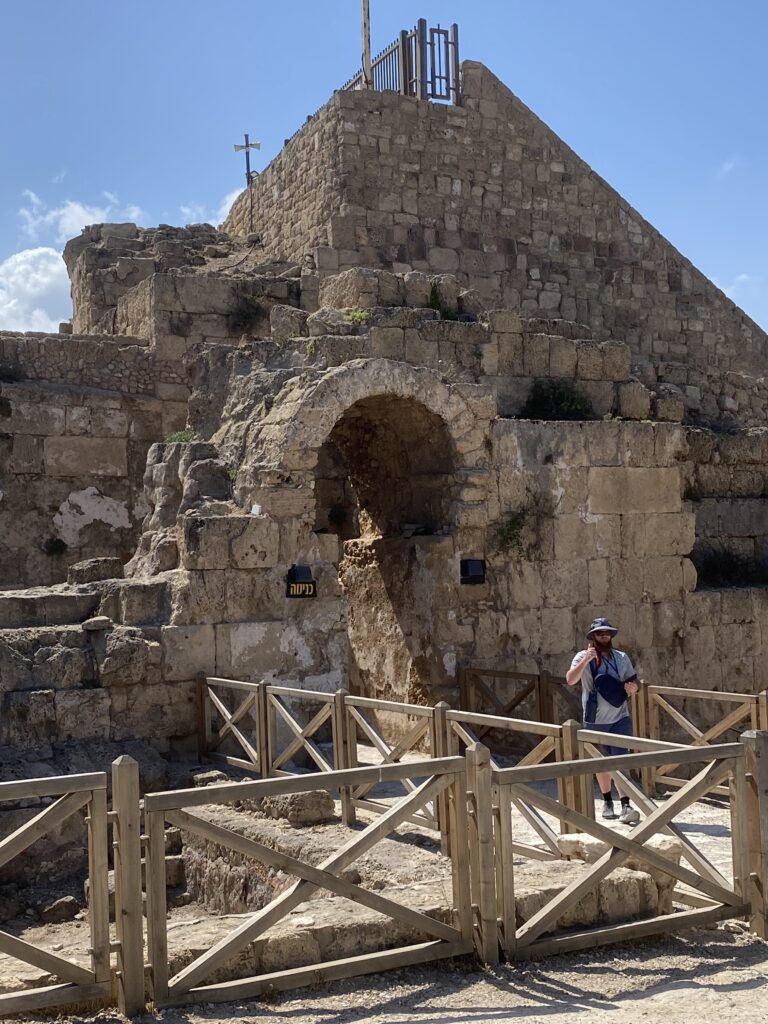
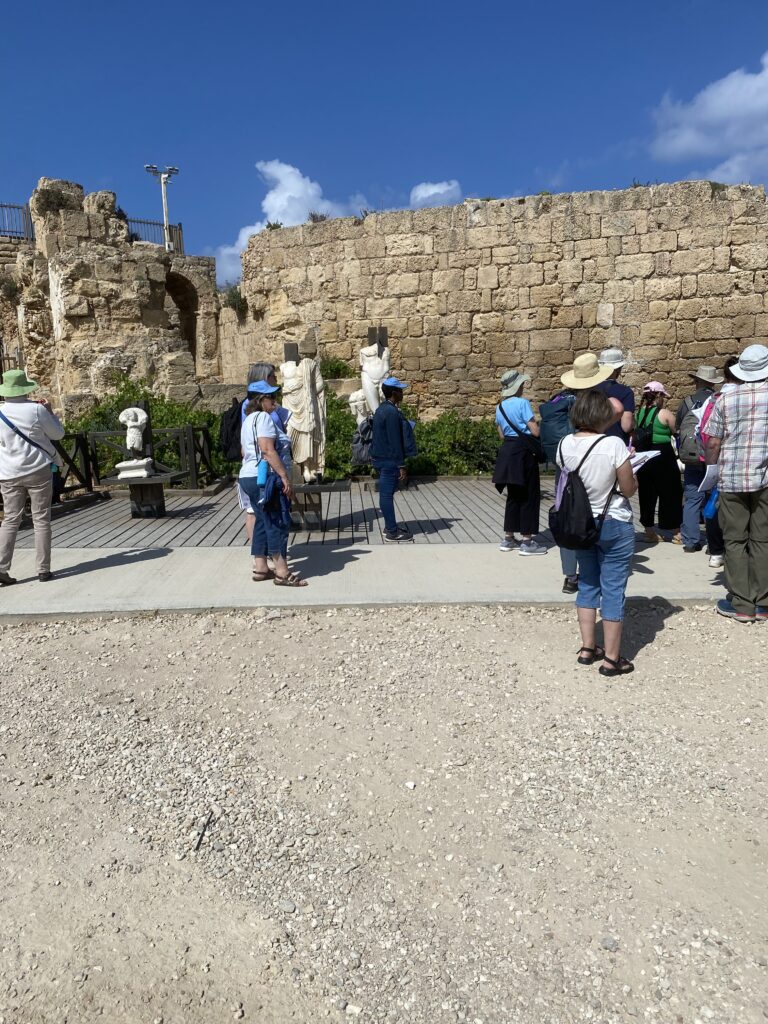
+Akko (Acre)
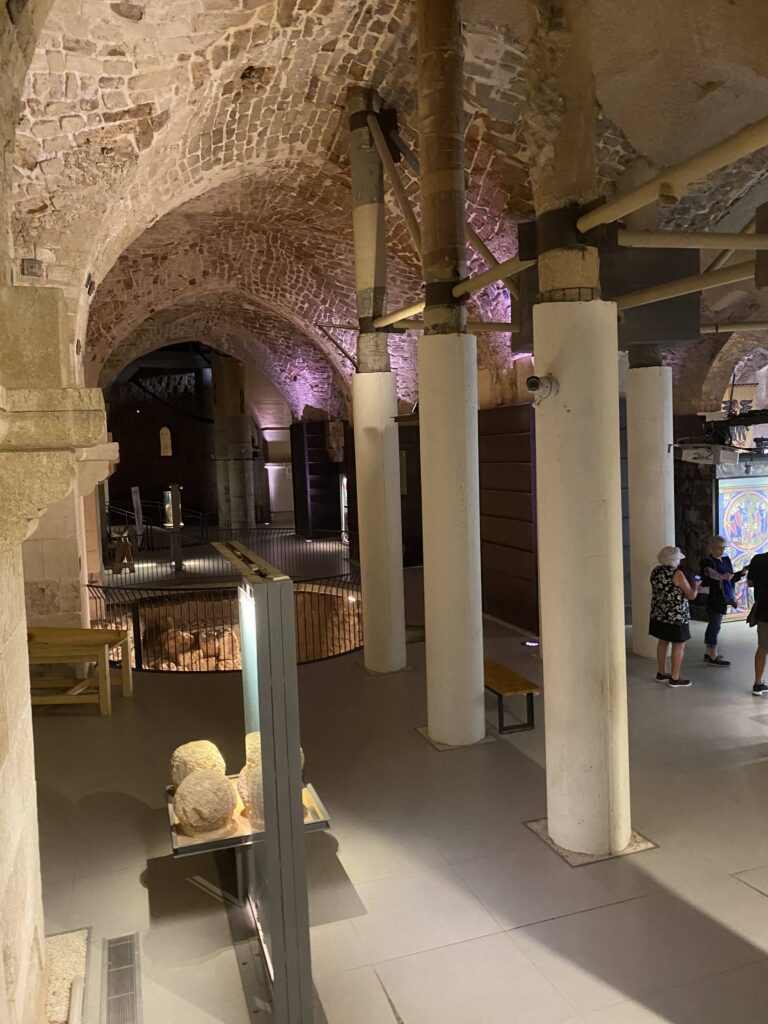
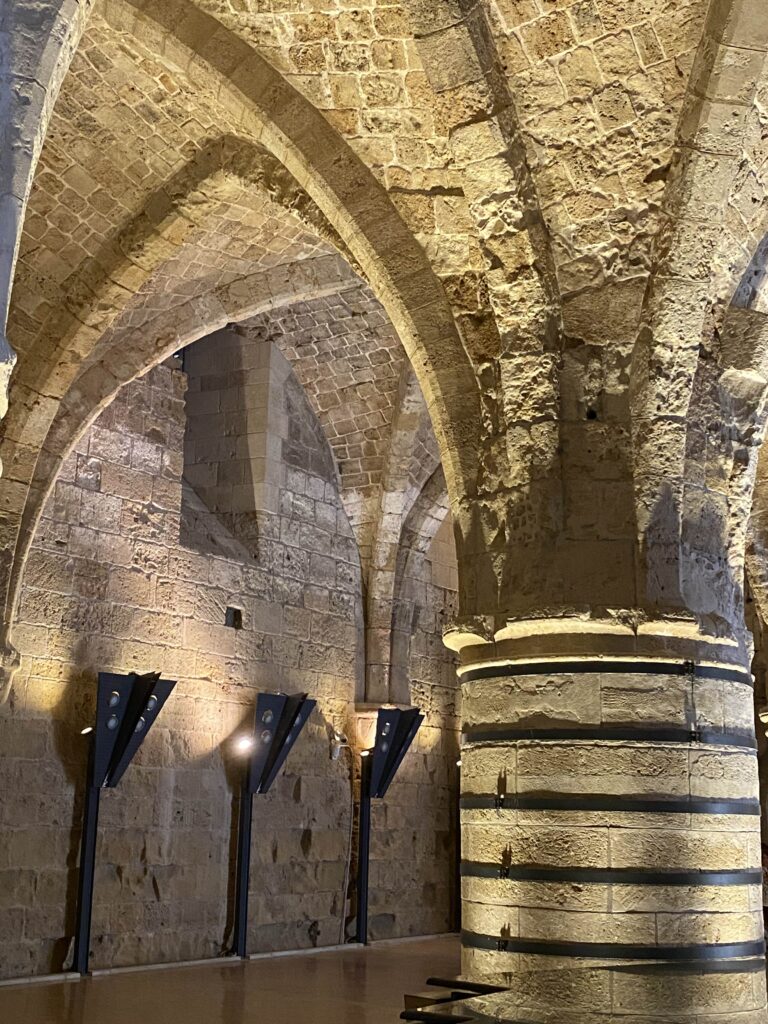
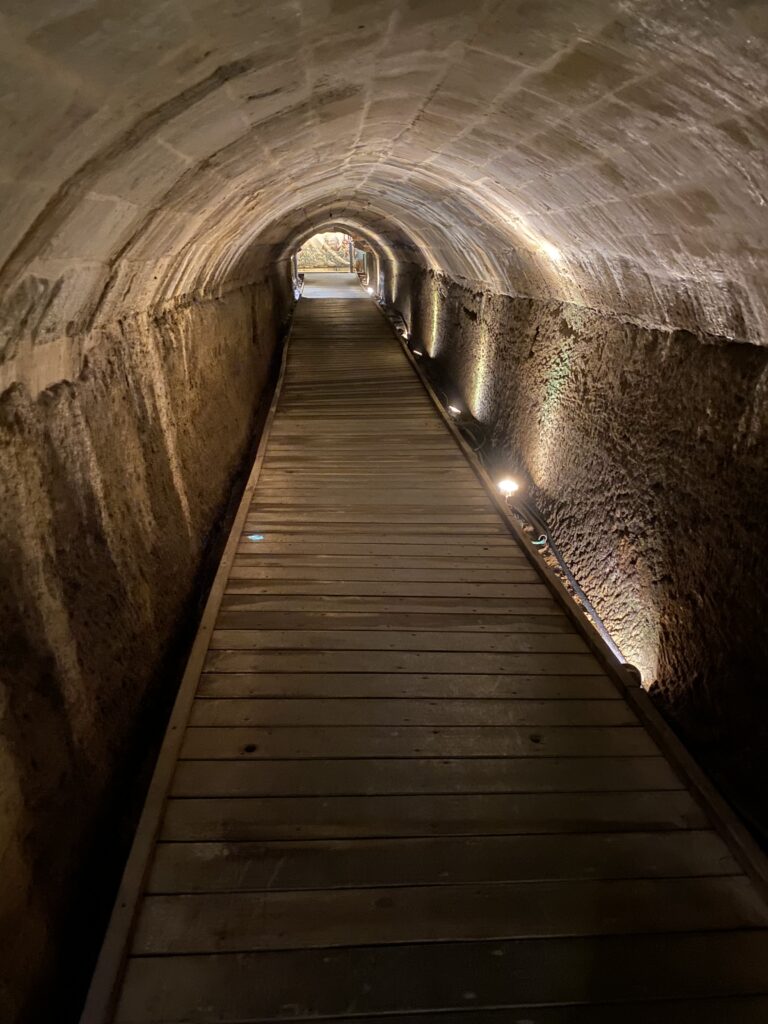
+Magdala and Sea of Galilee
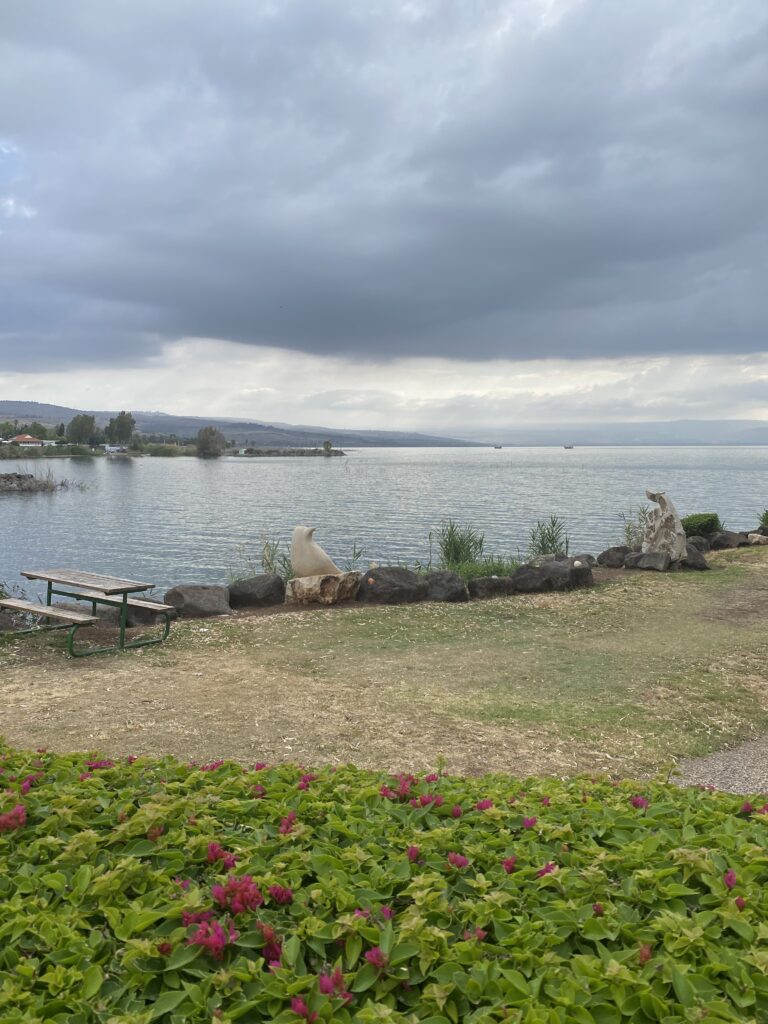
On Saturday, we sailed the Sea of Galilee. We saw an ancient boat that was from the time of Jesus, perhaps similar to one that He used to fish.
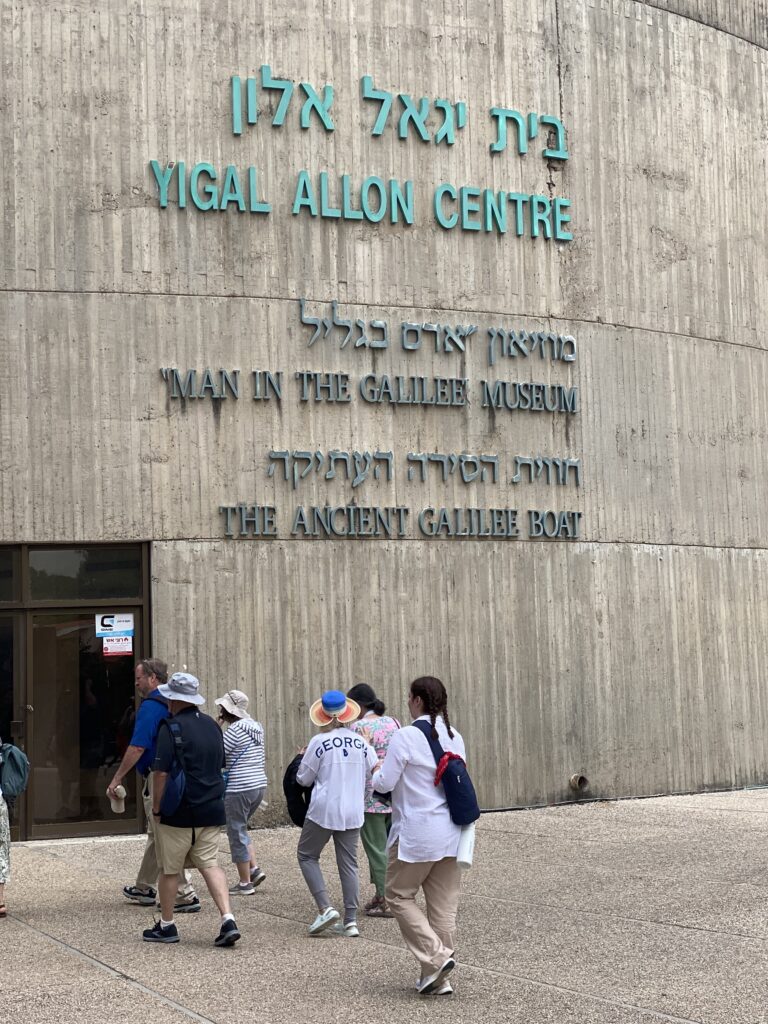
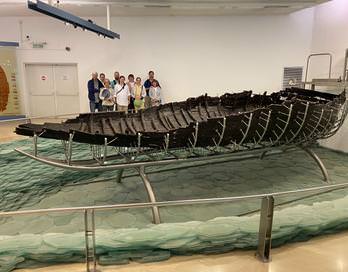
View video with more details!
+Zippori and Nazareth
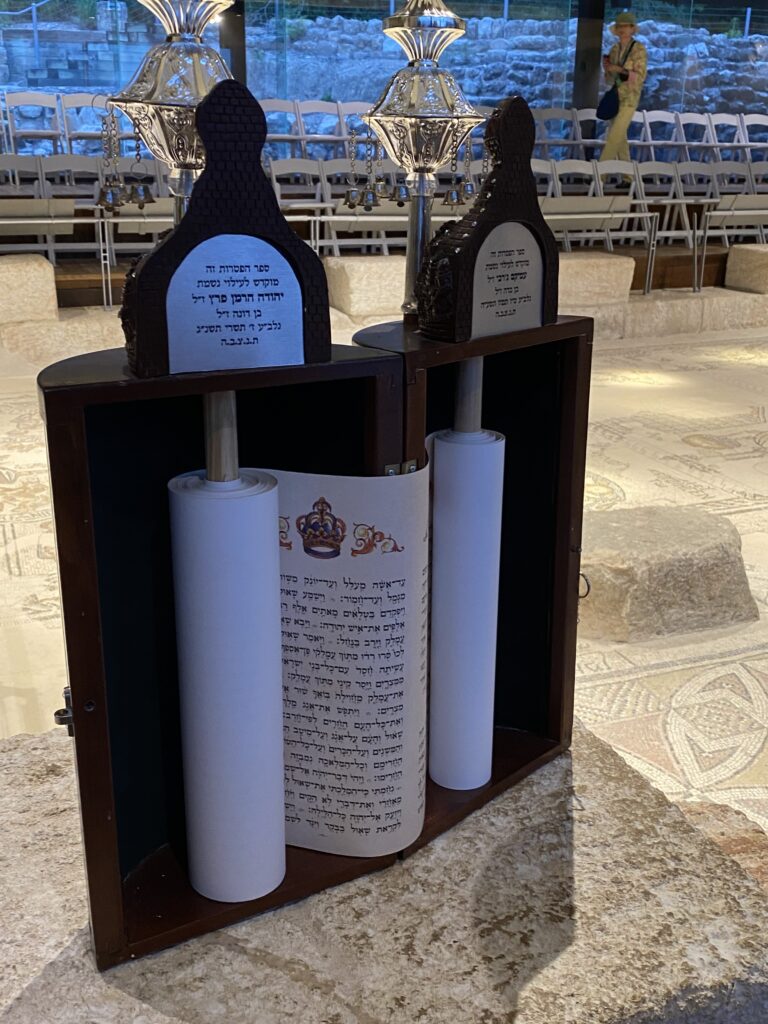
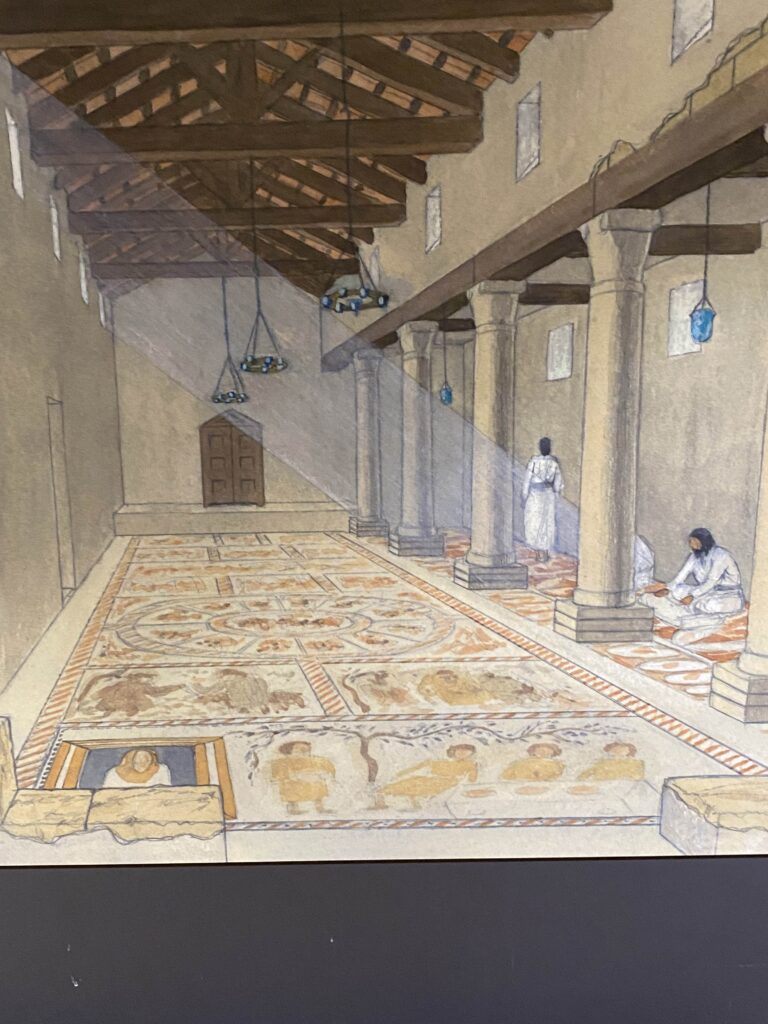
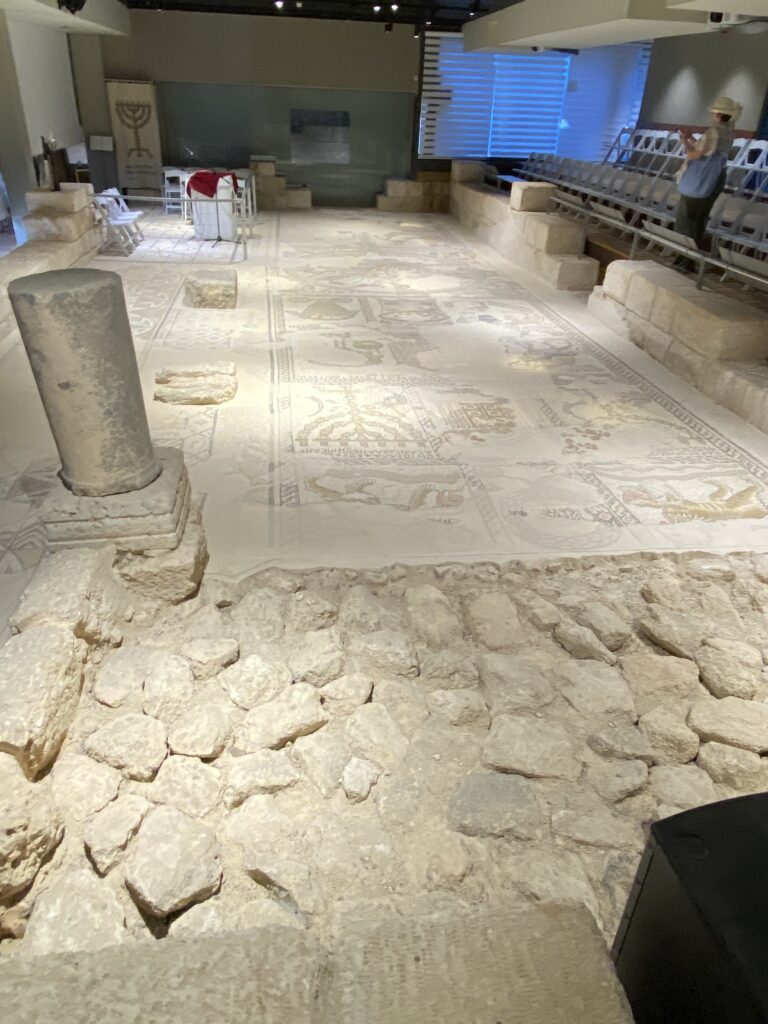
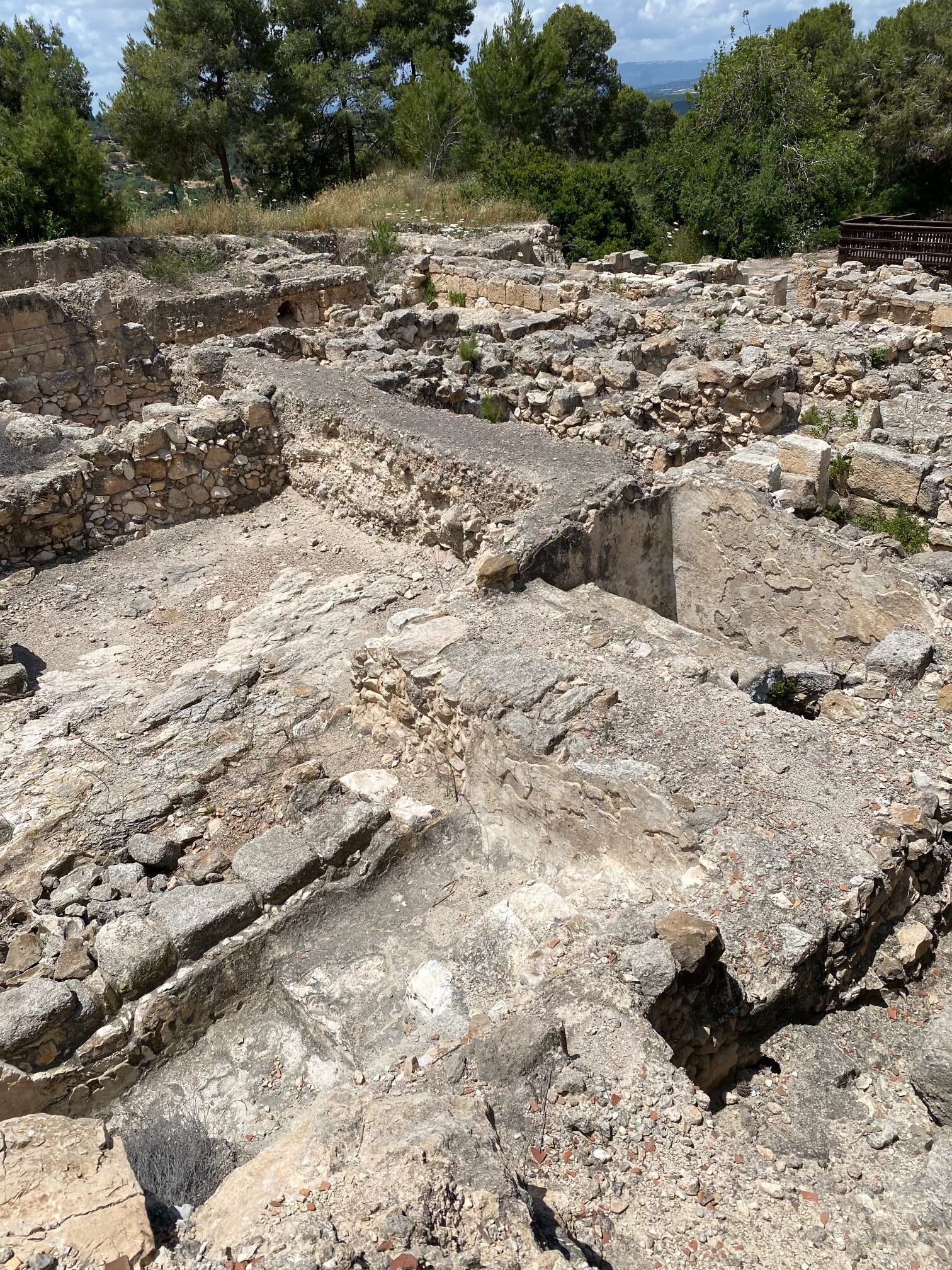
In Nazareth we visited the Church of Annunciation where the Angel appeared to Mary.
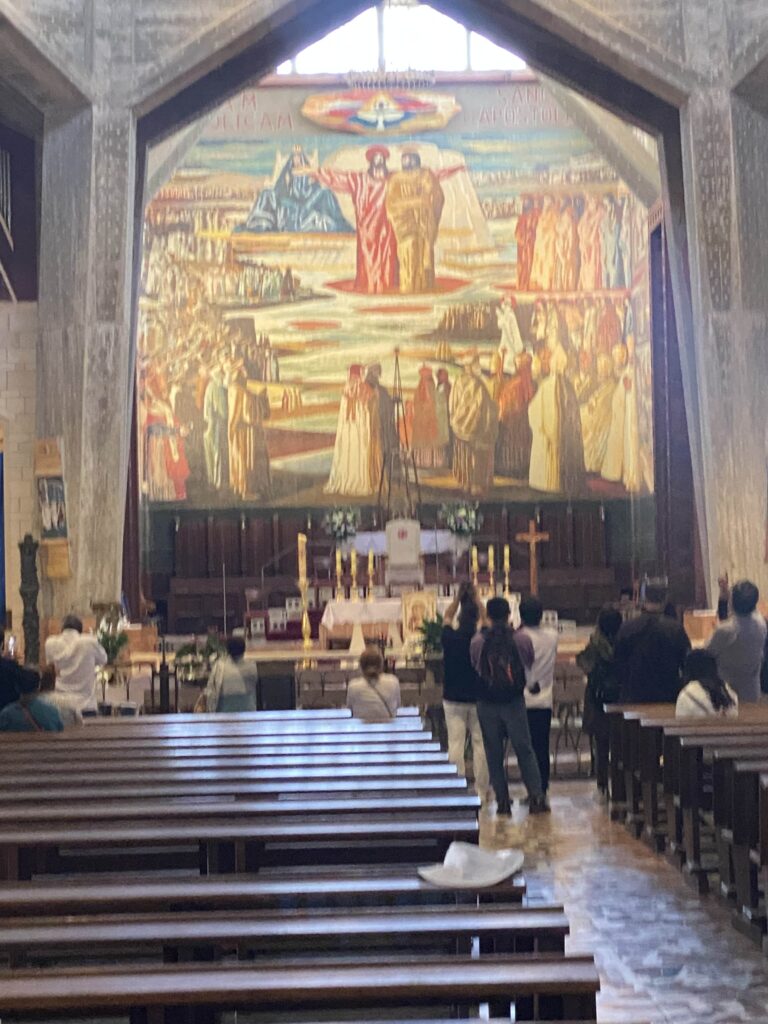
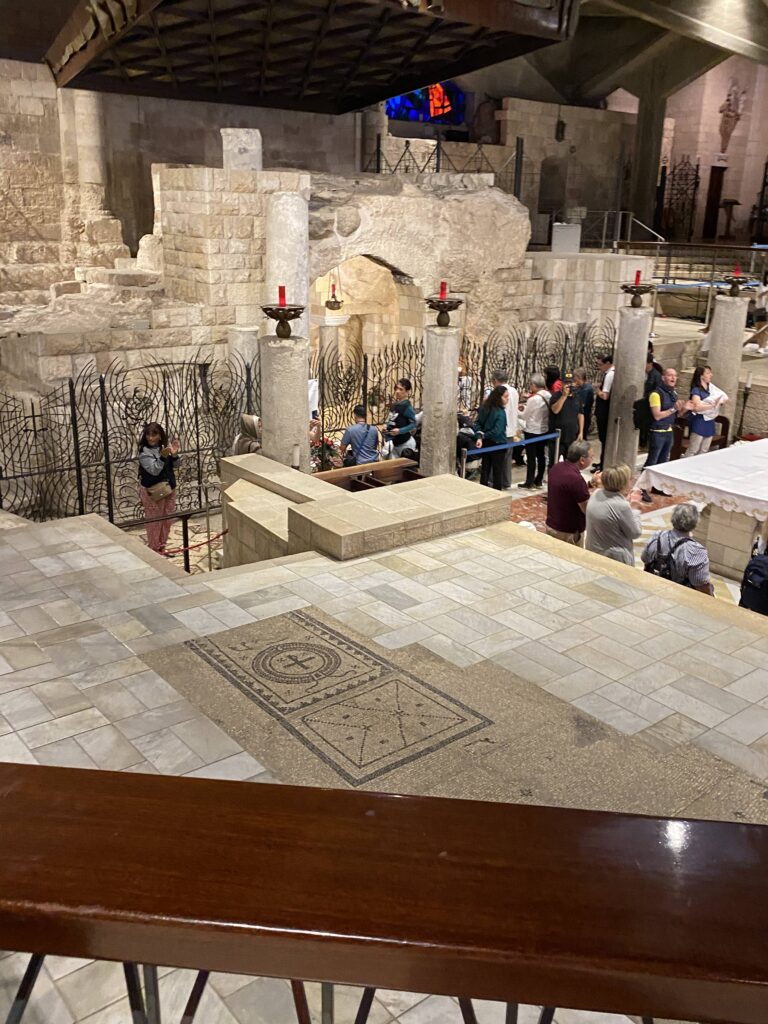
+Capernaum

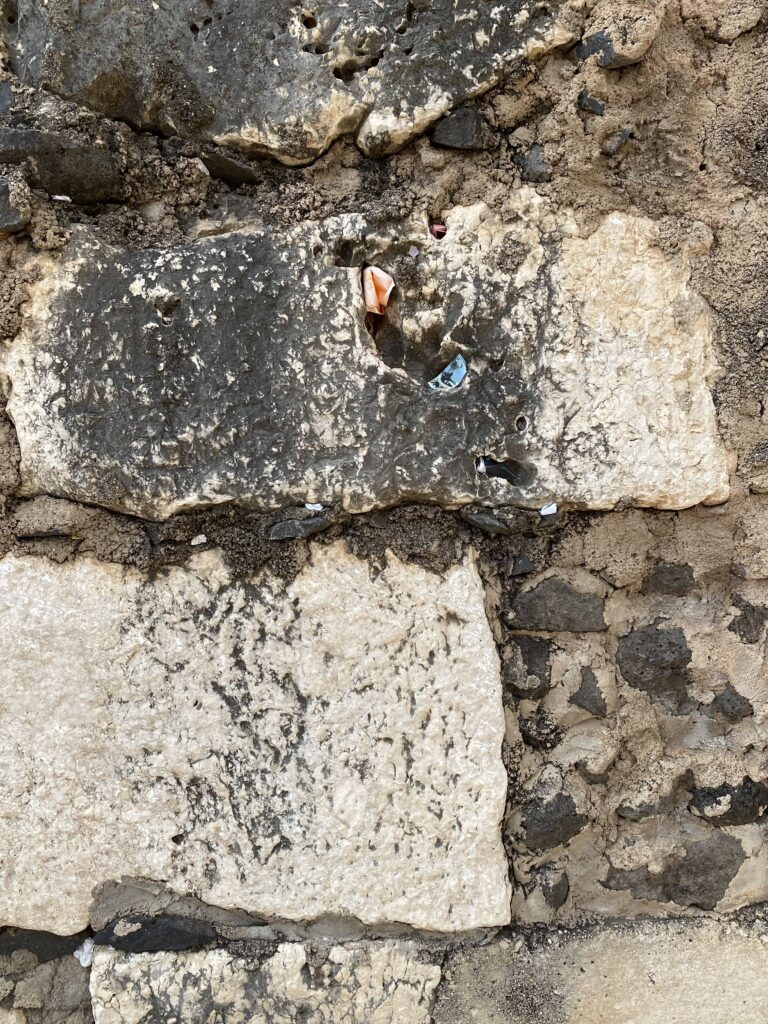
The dark stones are part of the foundation from the synagogue during the time of Jesus. Prayers are placed into crevices in the walls much like the Wailing Wall in Jerusalem.
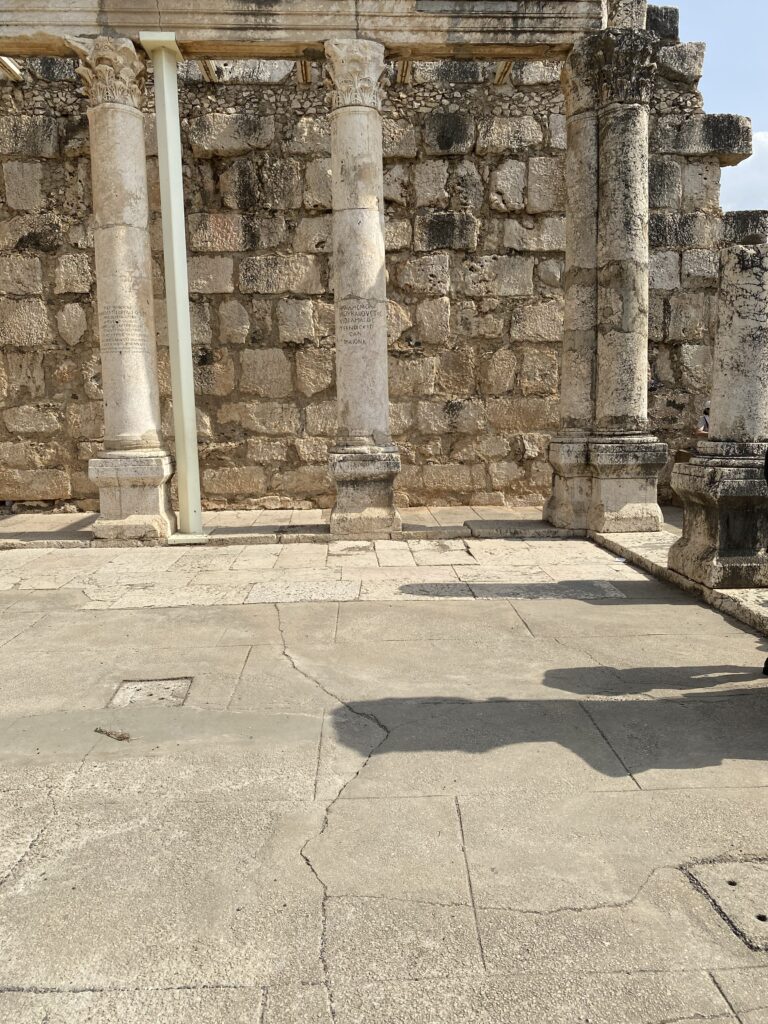
This is the synagogue built on top of the one Jesus would have visited.
+Caesarea of Philippi
Caesarea Philippi has been associated with a variety of religions and was known for the worship of Pan, the half man, half goat image of Greek and Roman mythology. There was also a shrine for both Zeus and Caesar. 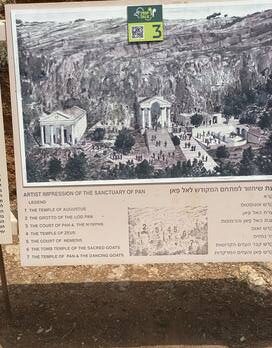
Here in Caesarea Philippi is where Jesus said to Peter ‘On this rock I will build my church”. This has important symbolism because the Gates of Hell were believed to be here (pictured below). Therefore, Jesus was indicating that through Him death is overcome.
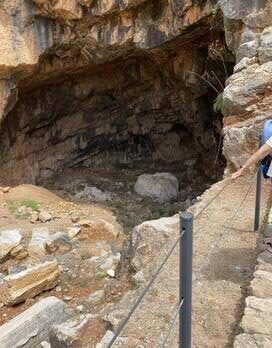
+Palace of Agrippa, II, Tiberius, Caesarea Maritima
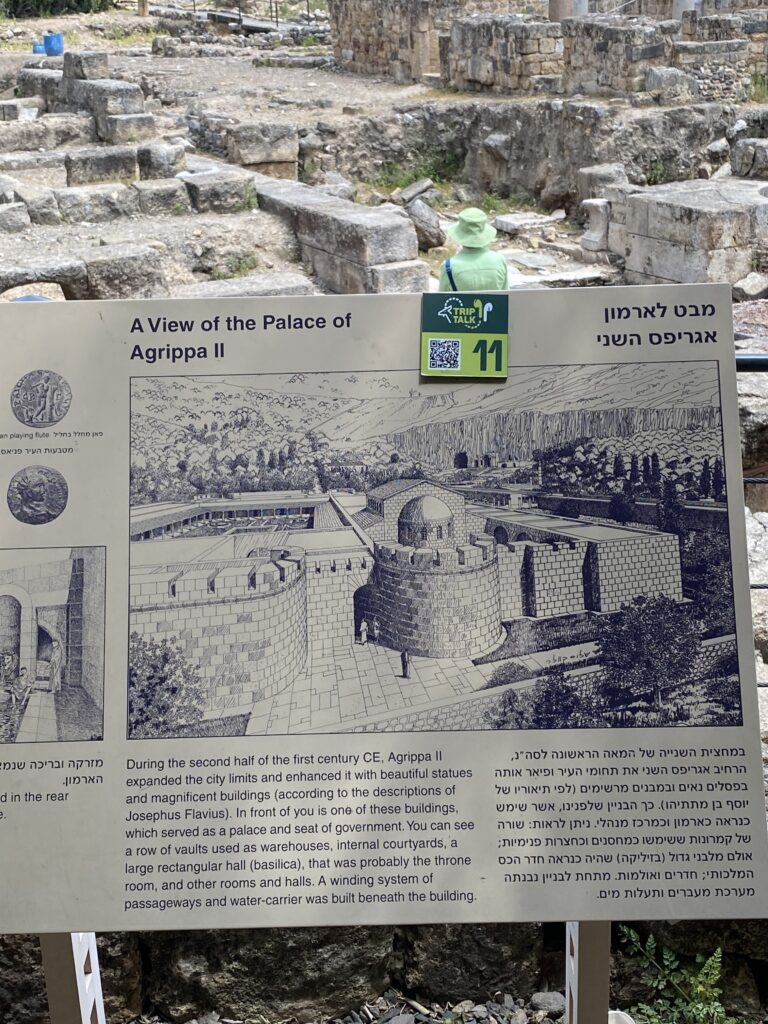
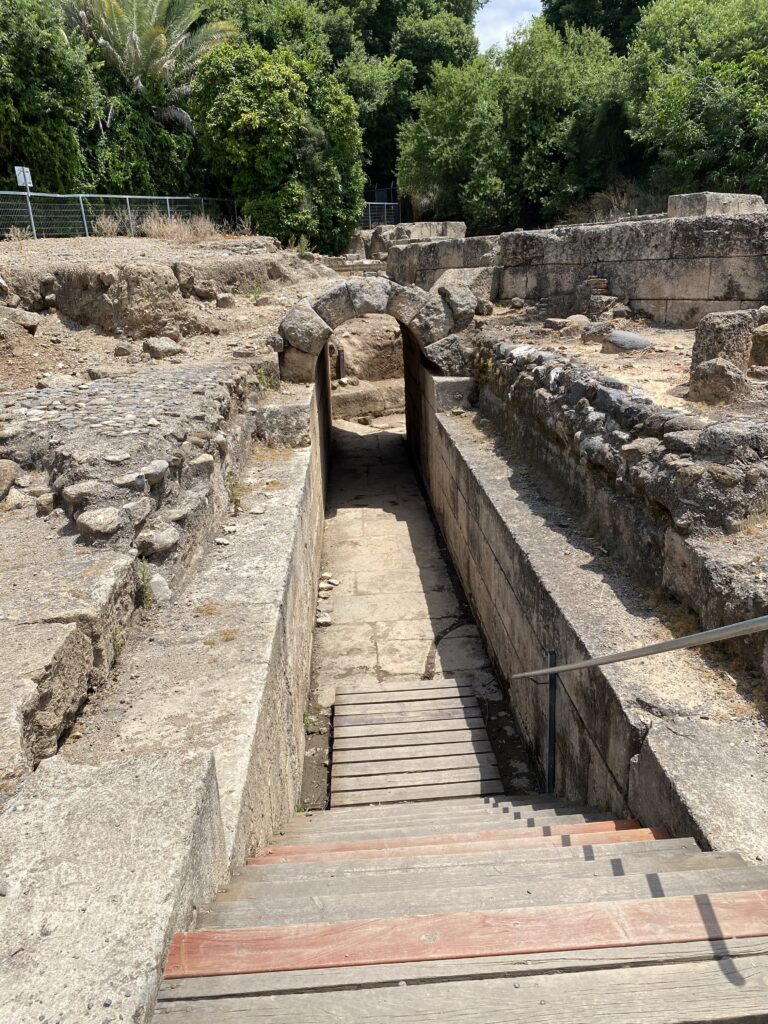
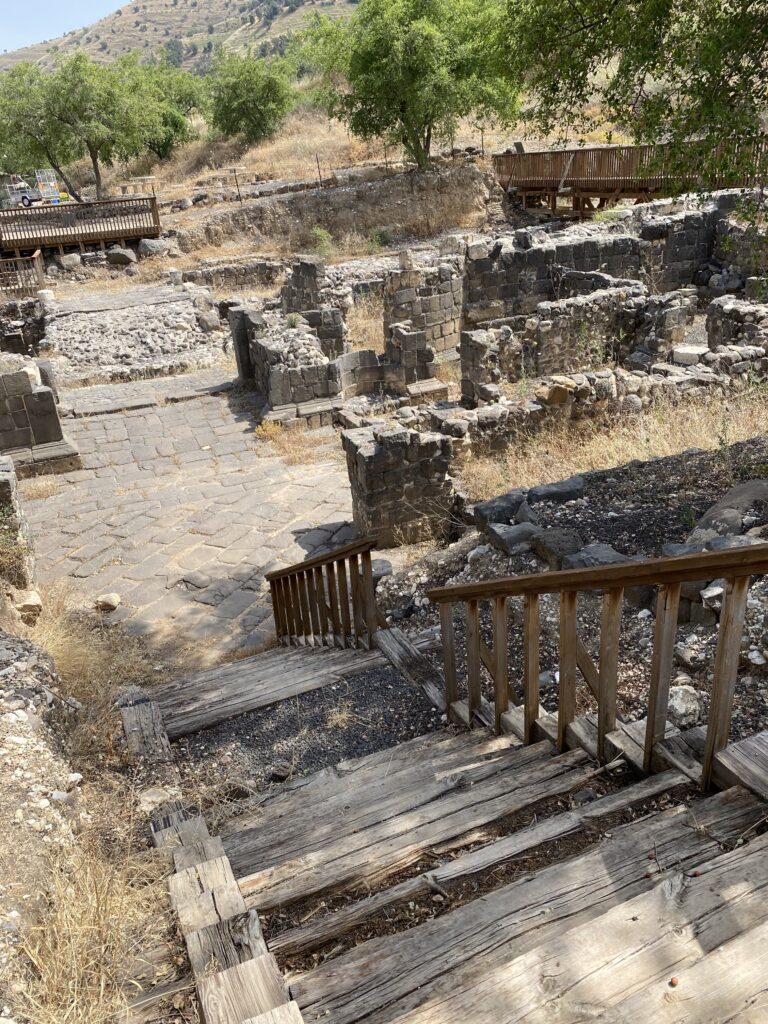
In Tiberius, we found the ruins of a theatre built during the time of Jesus. A theatre like this could have been where Jesus gave his beatitudes sermon.
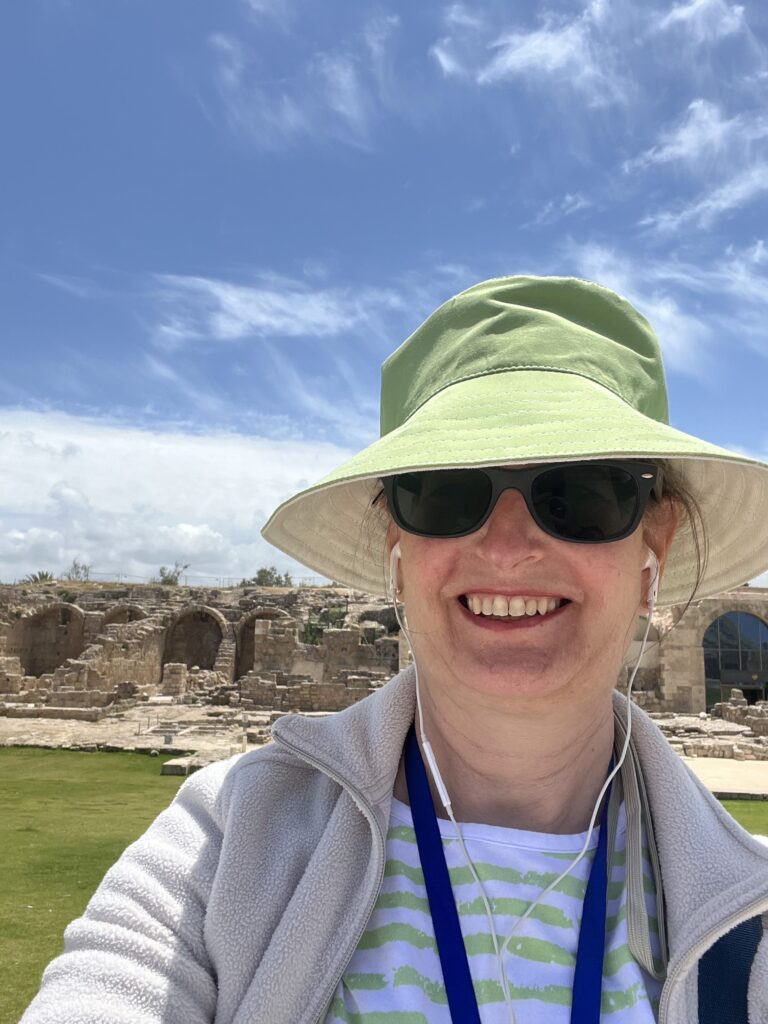
Dr. Beth Sheppard stands in the inner harbor of Caesarea Maritima (grassy area). This is the city where the Apostle Paul was imprisoned before being tried by Governors Felix and Festus. The arched rooms in the background were used as storage warehouses when the harbor was in use.
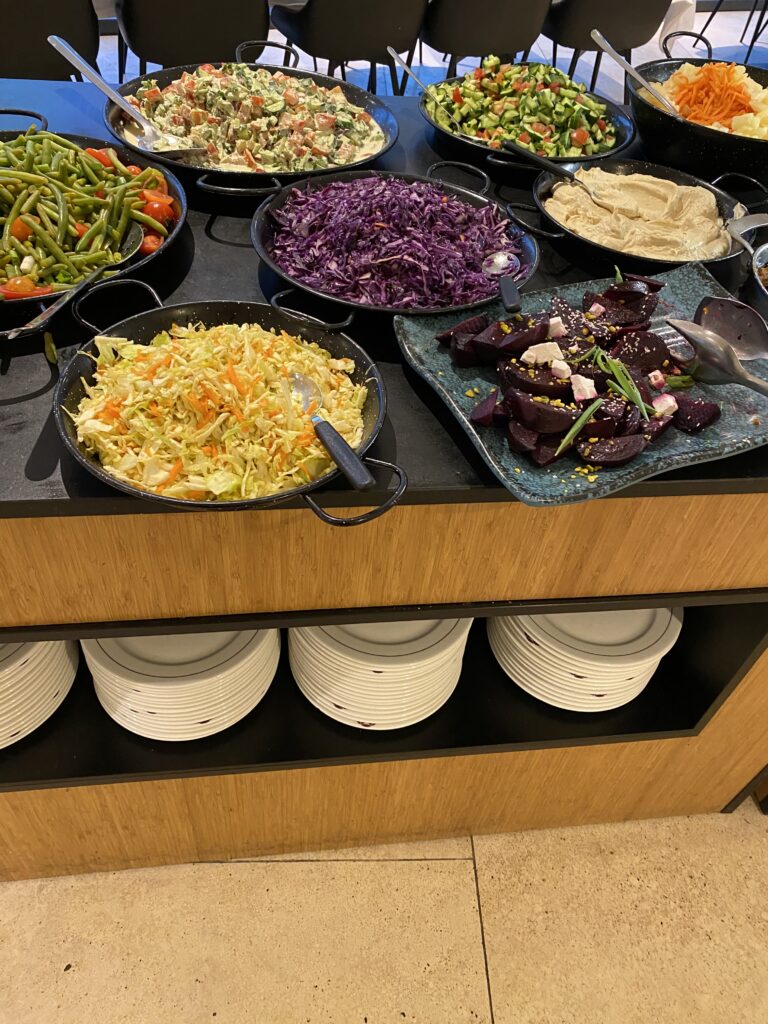
And when you travel with TU, you eat well!
+Masada and Qumran

Then, we are off to Qumran, the discovery site of the Dead Sea scrolls. We saw how Essenes, a Jewish sect, lived and visited Cave #4 where the first scrolls where found.
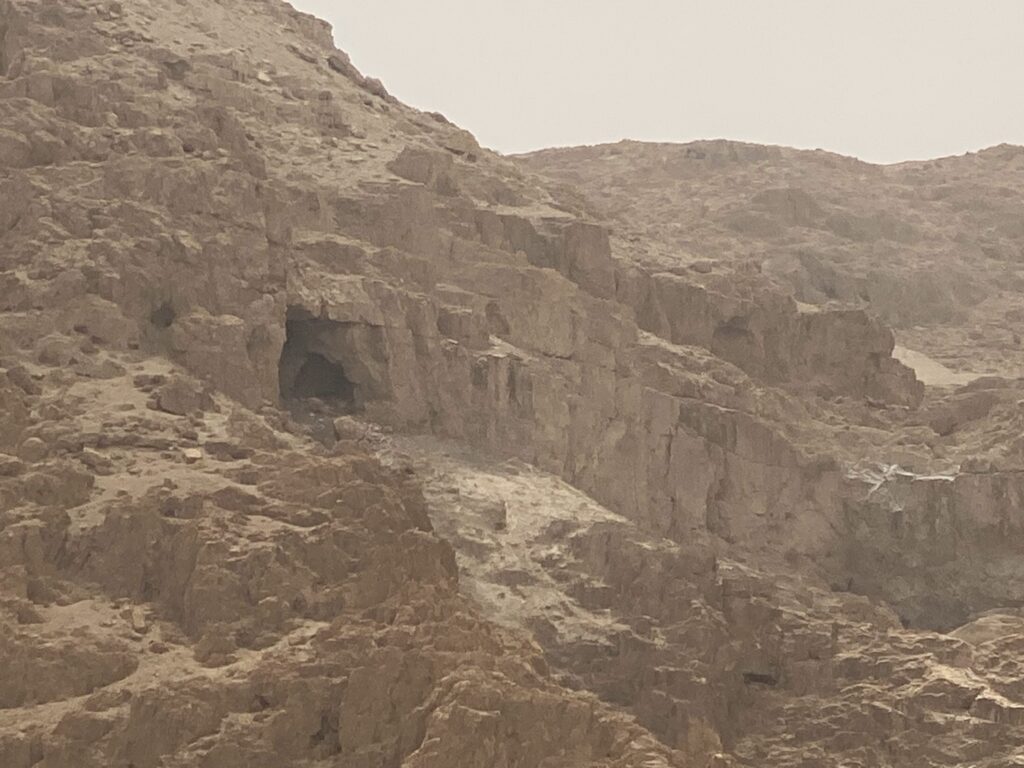
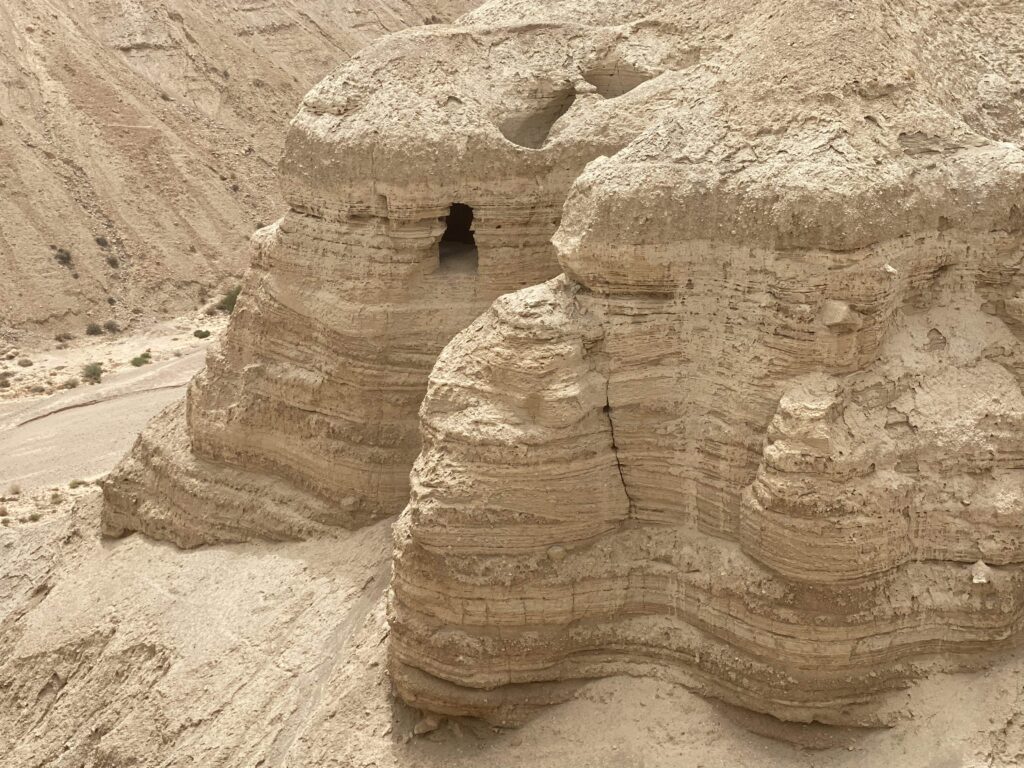
Finally, we stopped by the Dead Sea and took a dip. Well, kind of! It was fun to see everyone float!
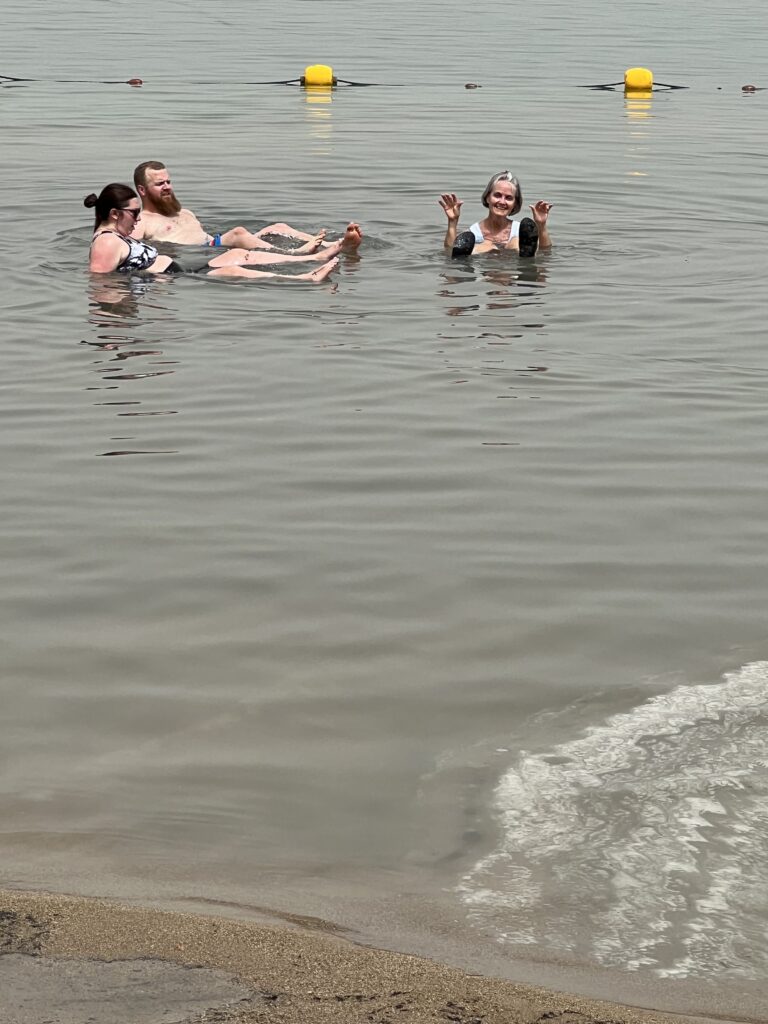
View video with more details!
+Jerusalem
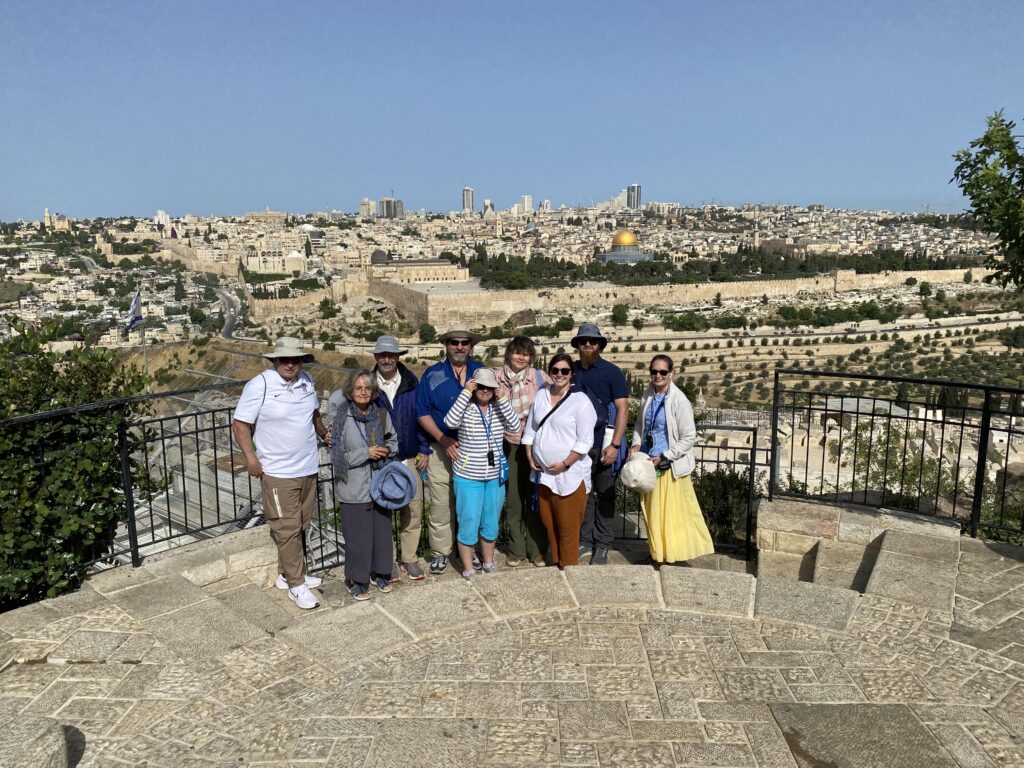 We then walked down to the Garden of Gethsemane. There was truly a Holy and spiritual feeling here!
We then walked down to the Garden of Gethsemane. There was truly a Holy and spiritual feeling here!
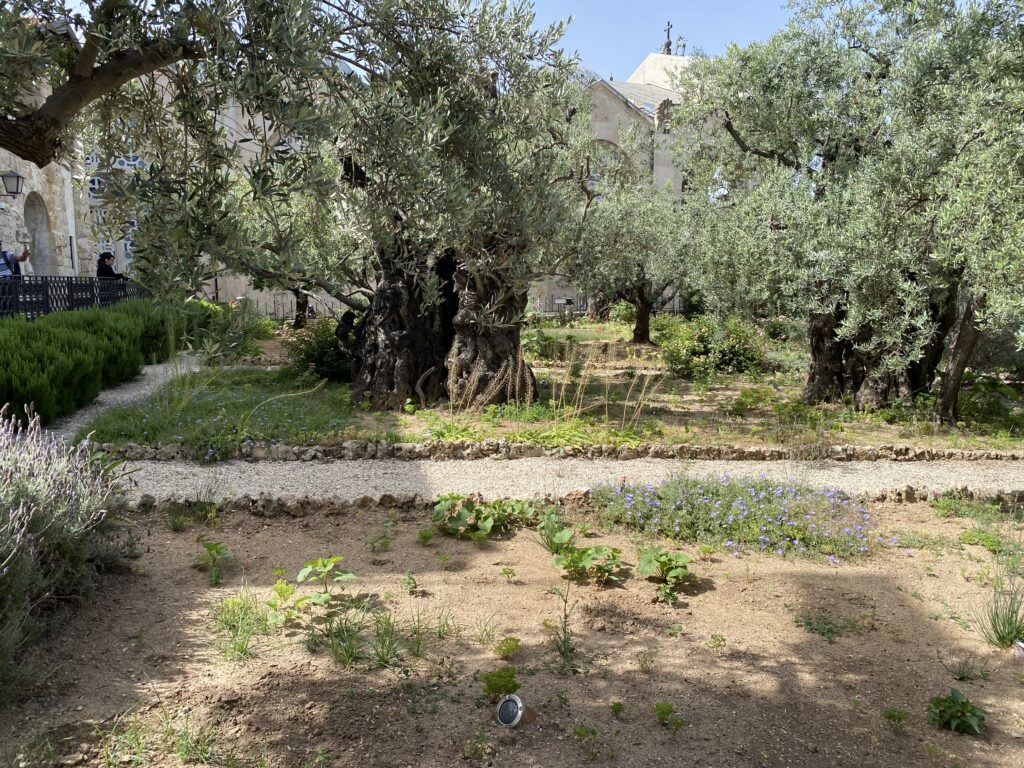
At the Israel Museum, they had a scale replica of the old Jerusalem. The big square in the forefront is the second temple.
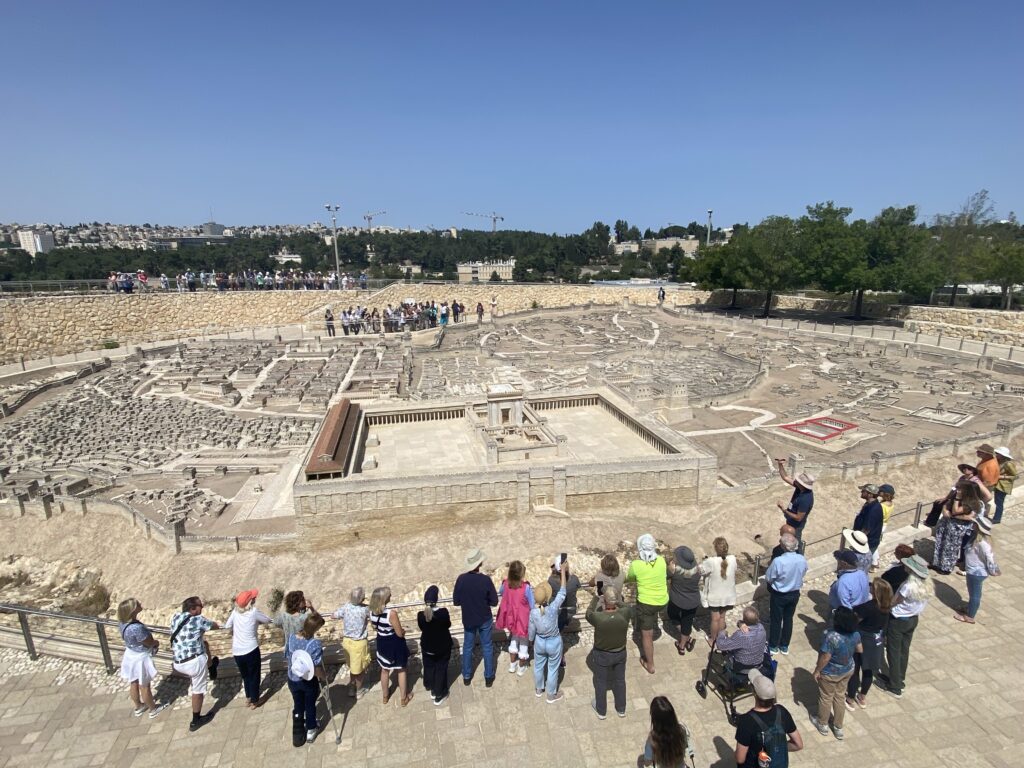
The Church of the Nativity was amazing! The small doorway in the first picture below is the entrance.
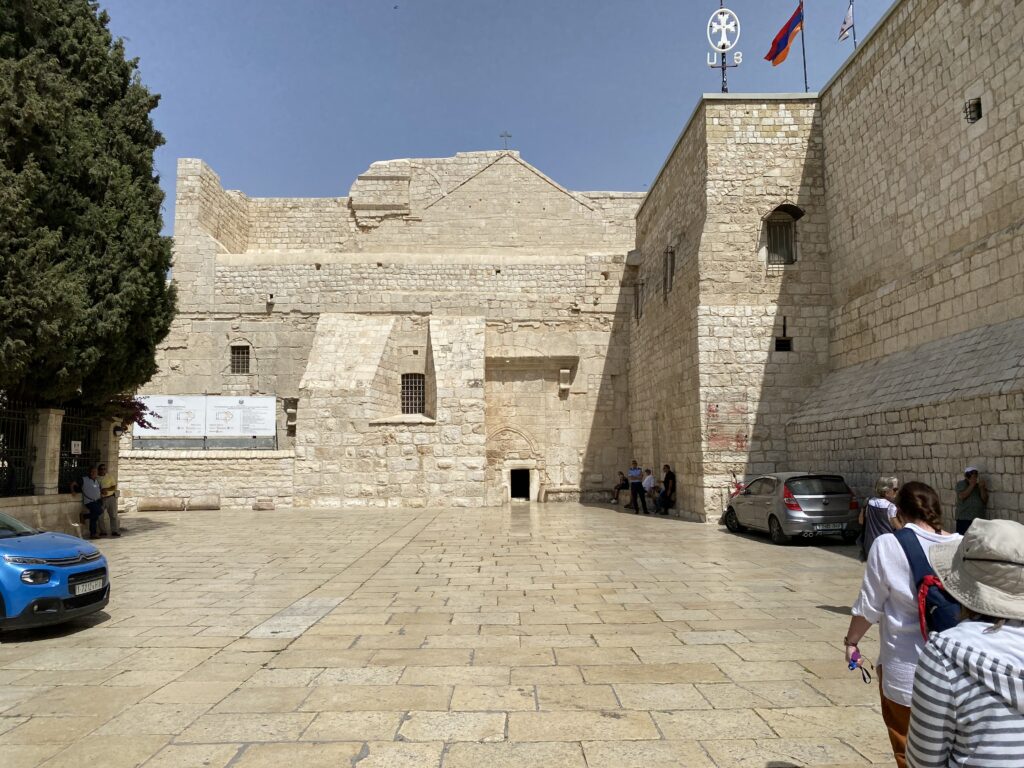
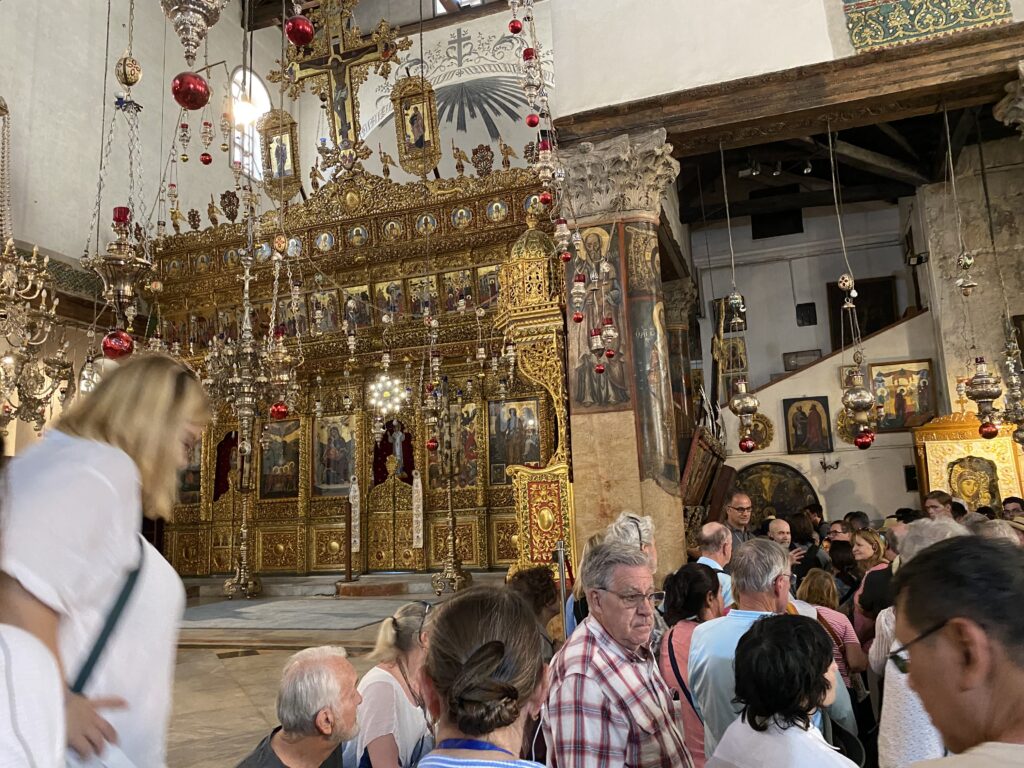
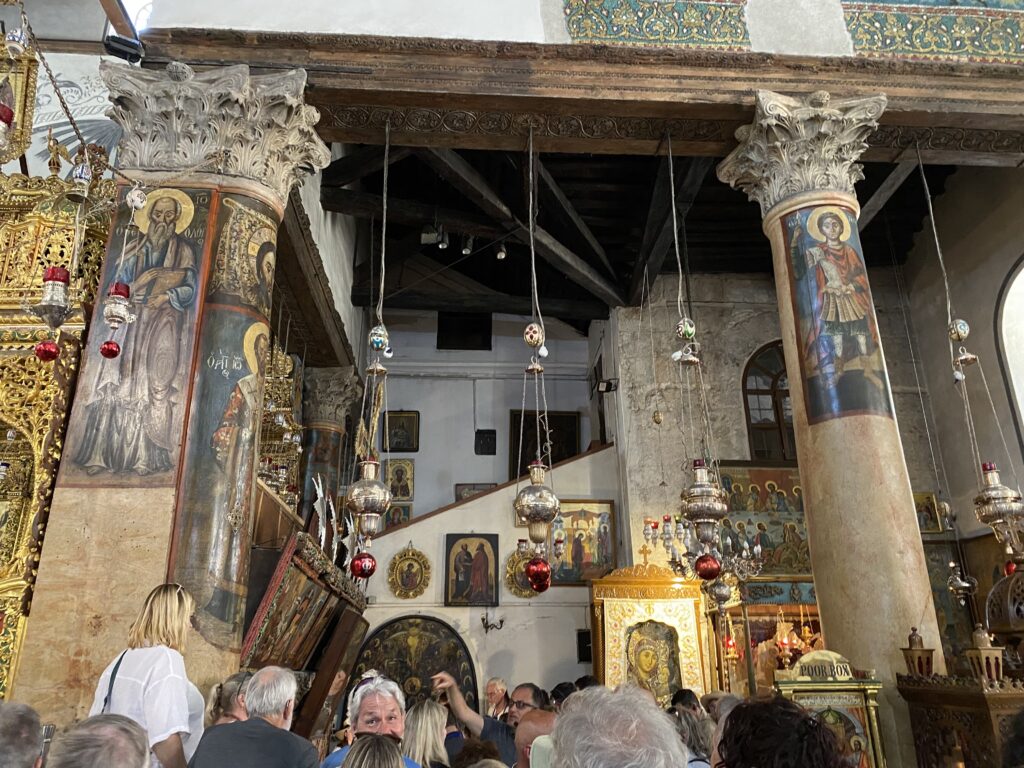
You can descend down a stairway to see the place of Christ’s birth which is under the Church. The silver star supposedly marks the place of His birth.
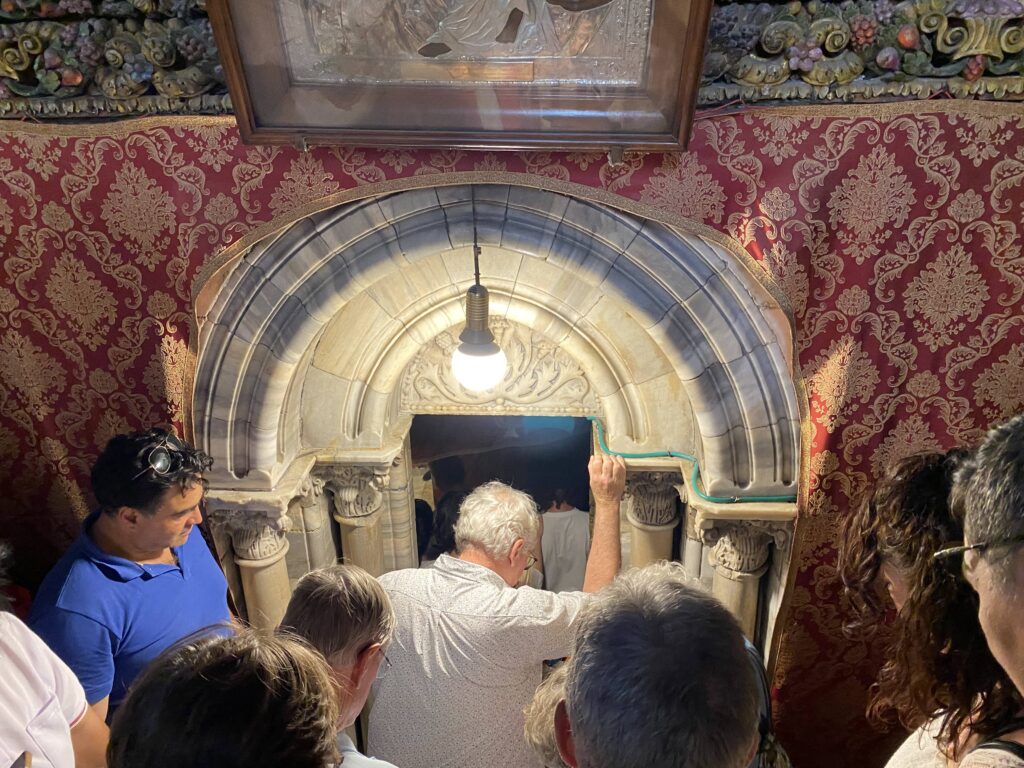
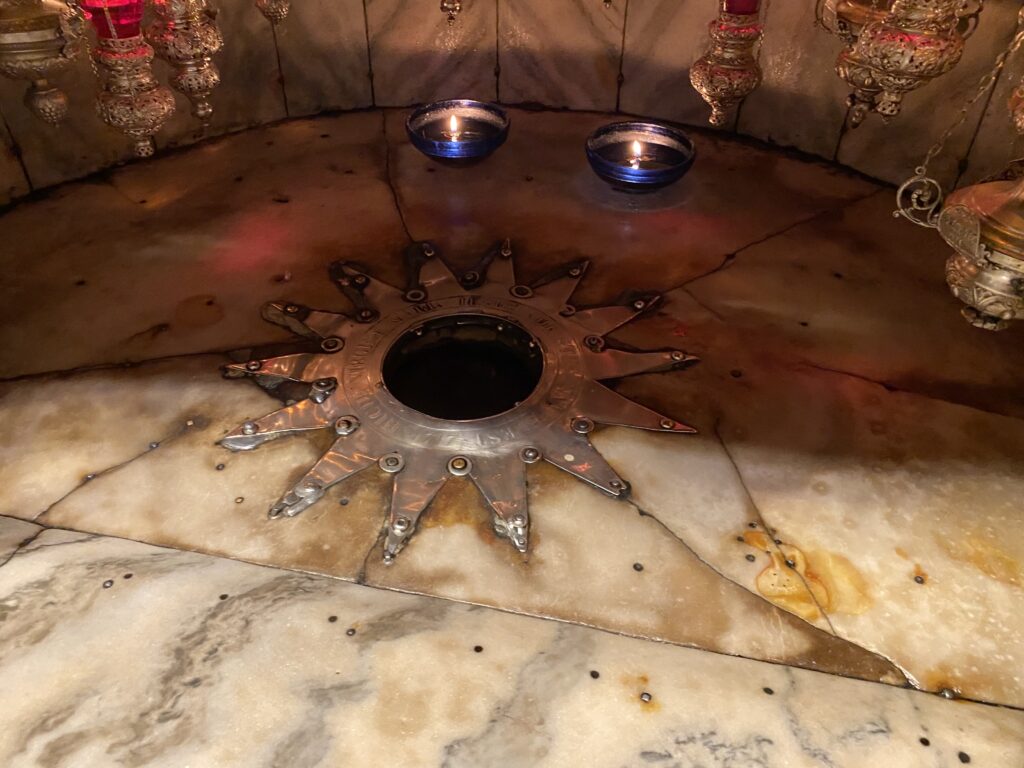
View video with more details!
+Jerusalem Day 2
Three denominations share ownership of the Church: Greek Orthodox, Catholics and Armenian Orthodox. You can see in the picture below a small ladder near the top, left-hand window. This ladder is said to be 100 years old. It is still there because the three denominations cannot agree on whether or not to remove it.
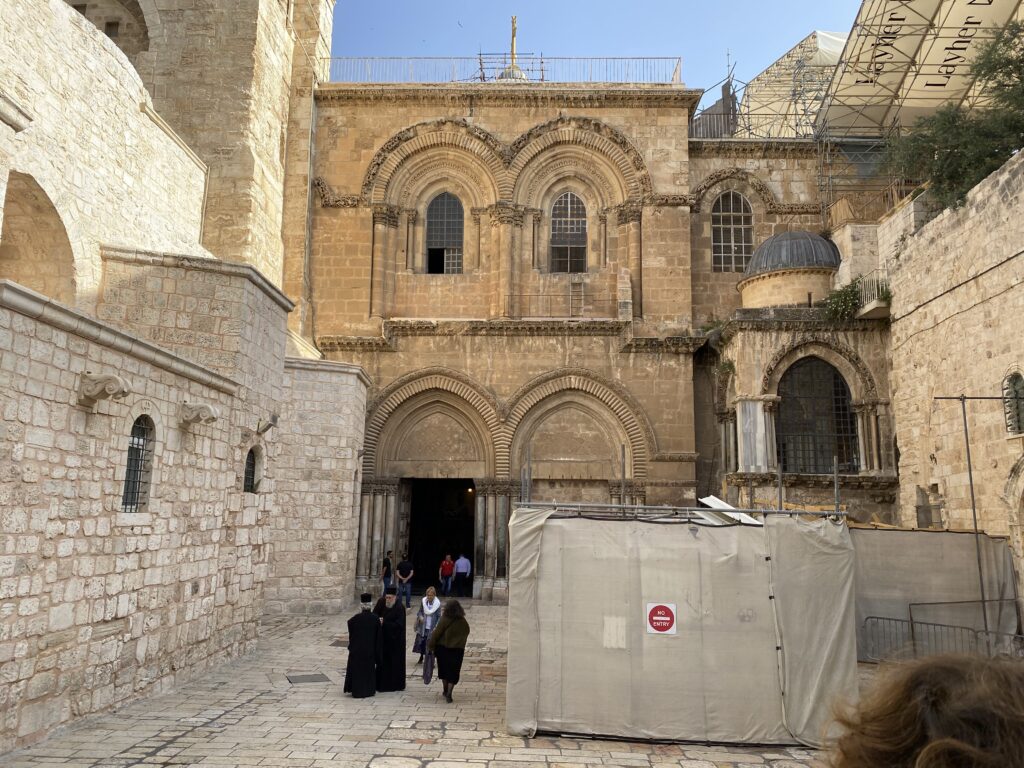
It is difficult to see, but there is a man under the alter in the picture below. He is touching the possible place where Jesus was crucified.
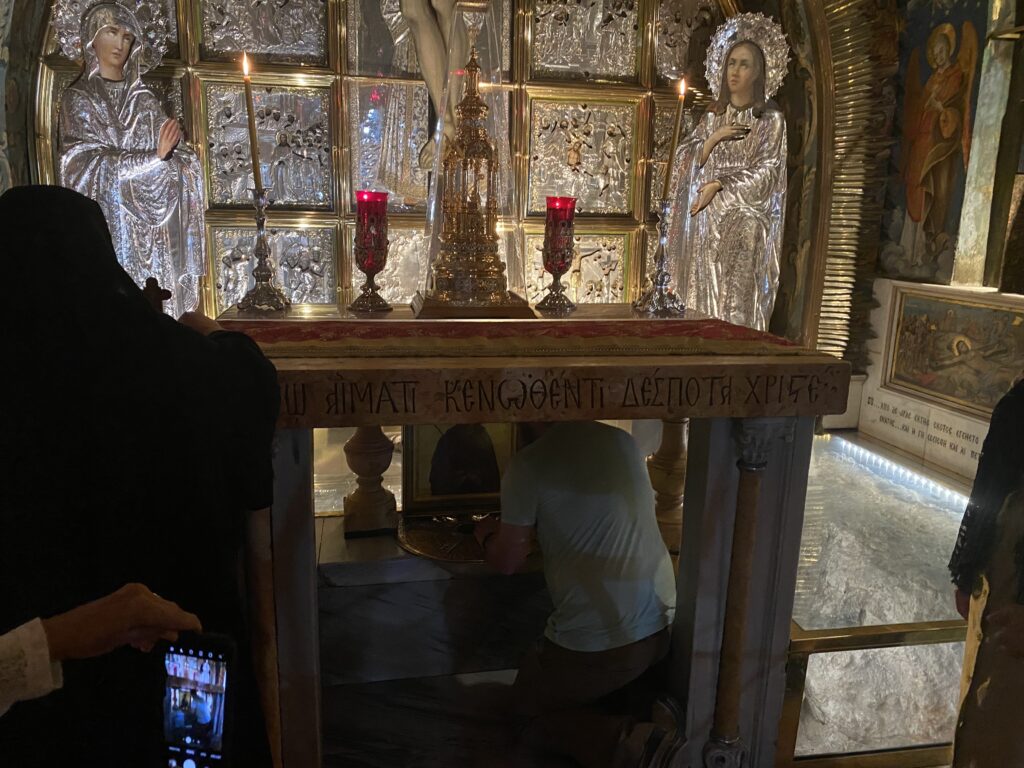
This picture is to the entrance of the cave tomb said to be where Jesus was laid and resurrected.
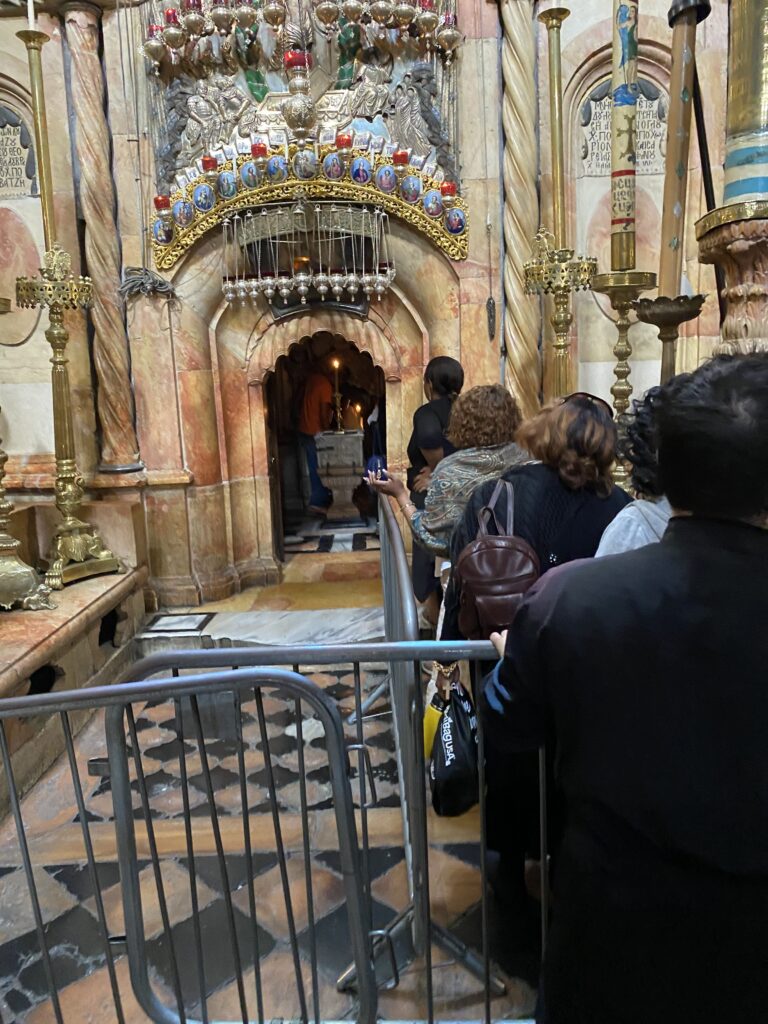
We then walked part of the Via Dolorosa (the last 4 stations of the cross are located in the Church or the Sepulcher.) This is a processional route in the Old City that represents the path Jesus would have taken on the way to His crucifixion.
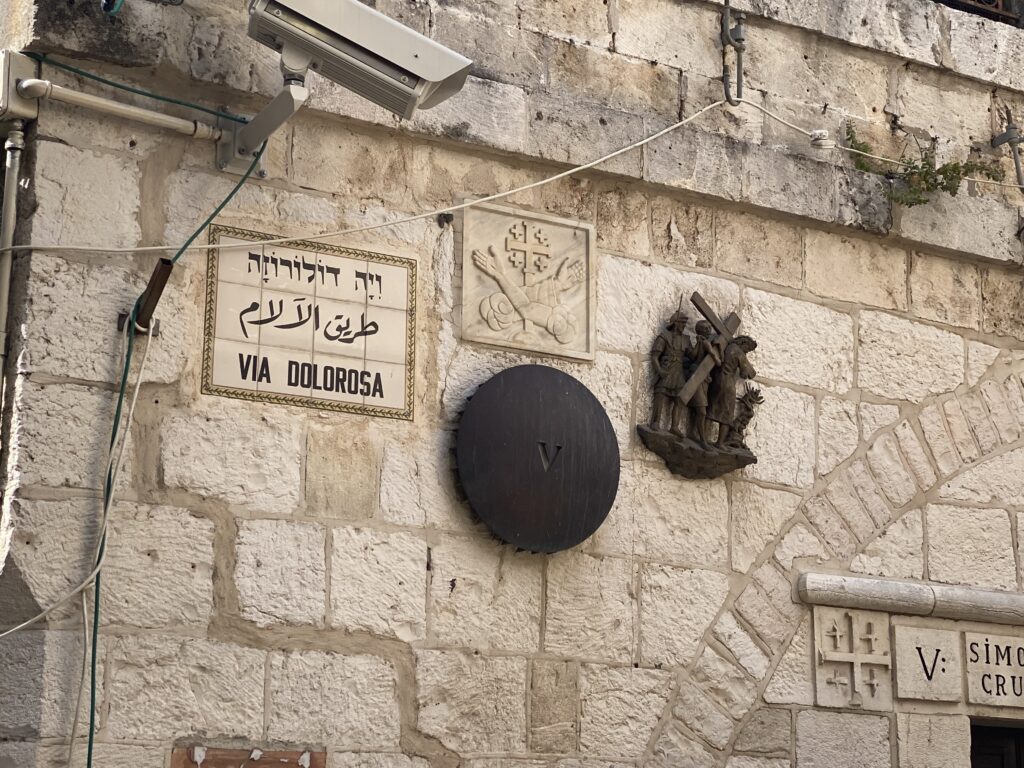
We also visited the Western Wall (also known as the Wailing Wall). This is a section of the old temple wall and is a holy place for the Jewish faith as it is the closest they can get to the Temple Mount. Men and women pray at opposite ends of the wall ( not together ).
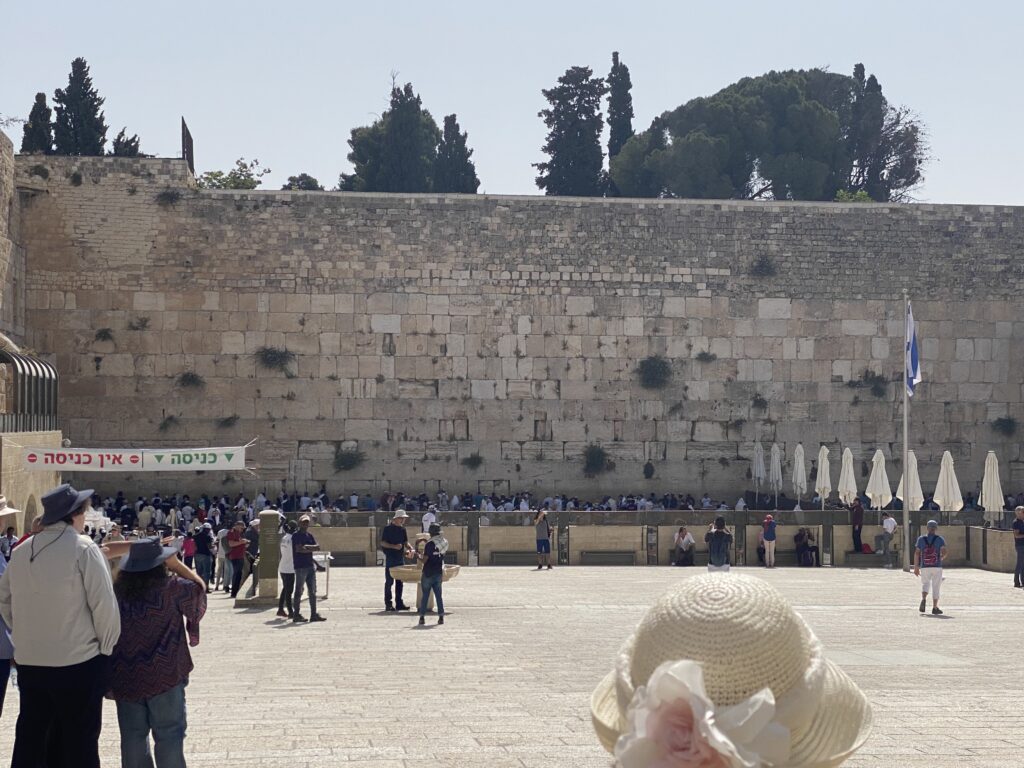
Below is a picture of a vendor stand selling spices. Included is Frankincense and Myrrh. I’ve always heard of them but had no idea what they looked like!
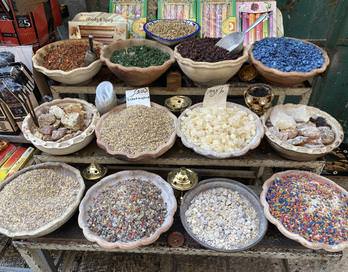
We walked down to the City of David. This is considered to be the original settlement of Jerusalem.
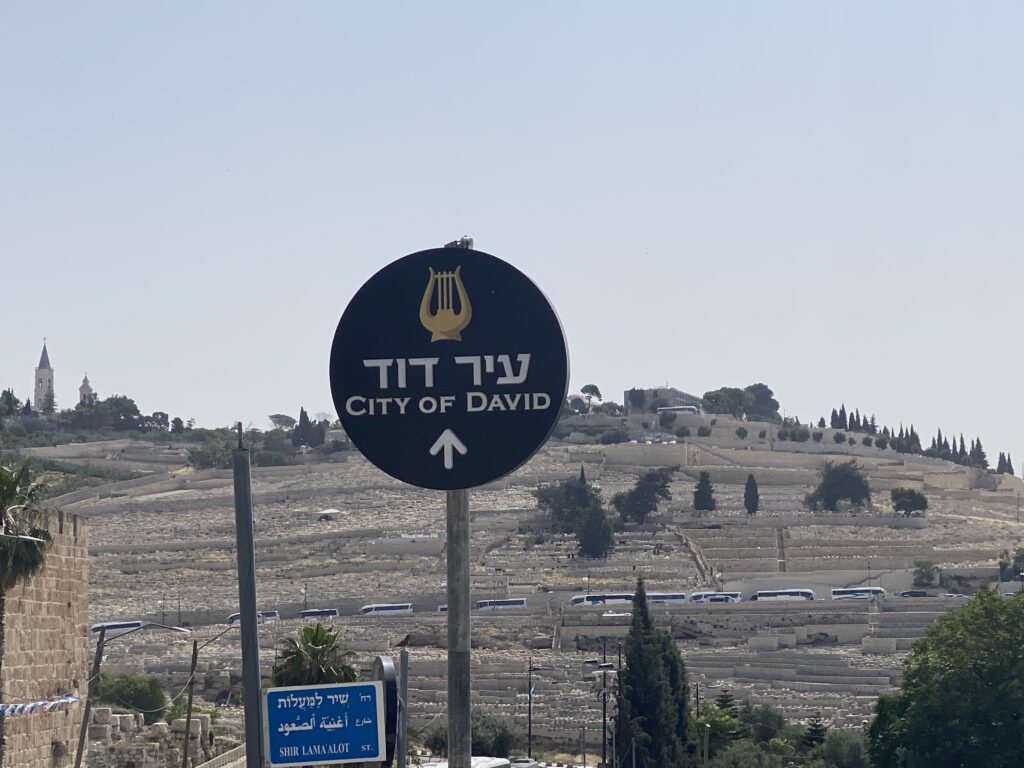
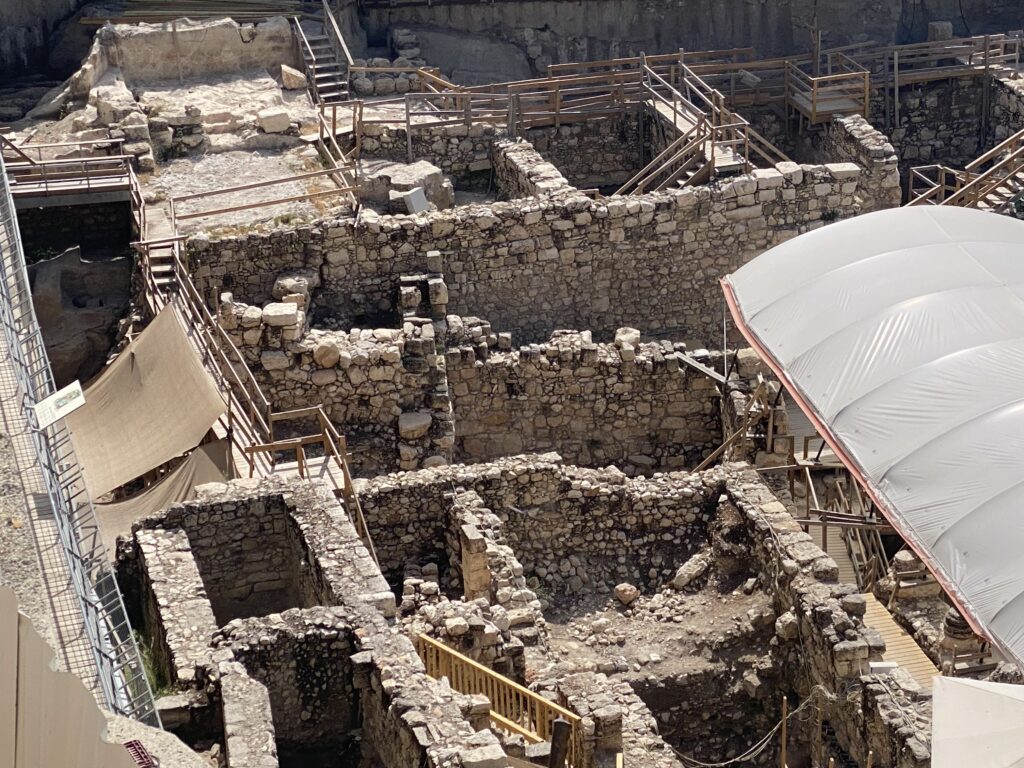
Jerusalem has been destroyed and rebuilt several times, so many streets are actually built above the old city streets. However, in a few places excavation allows us to actually walk on the where Jesus may have trod. This part has been excavated down to the streets of 2000 years ago.
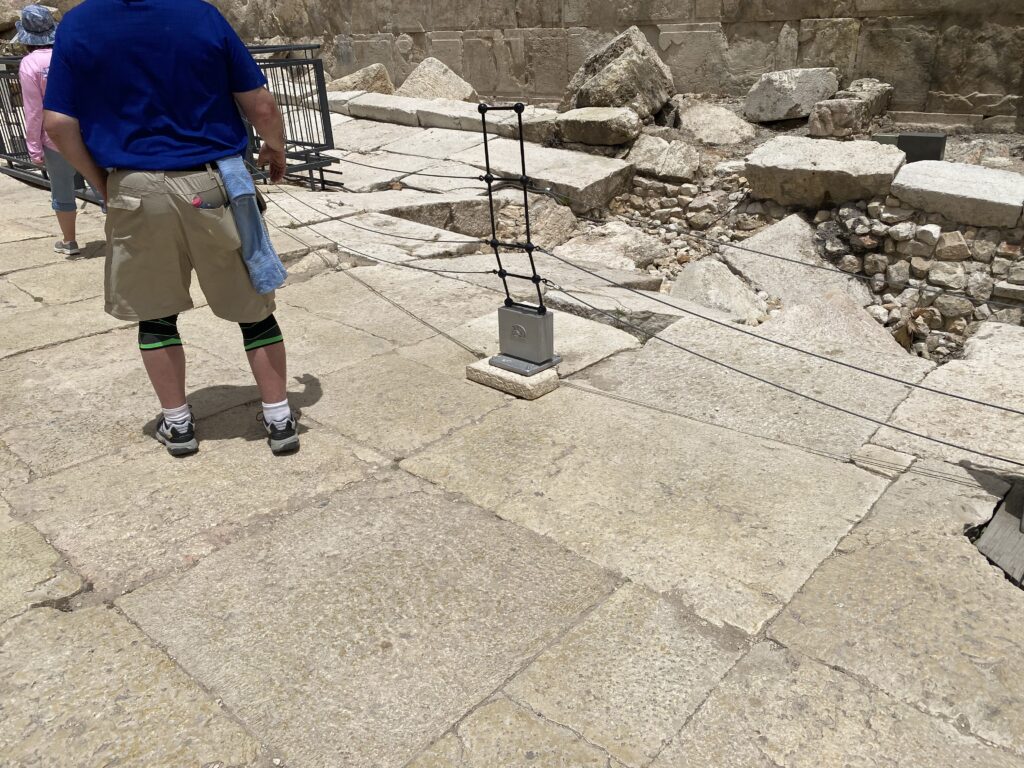
Here’s a picture of our group sitting on the southern steps going into Jerusalem. At one time, there were gates in the wall, but they have been filled in. These steps date back 2000 years. Jesus may well have walked here!
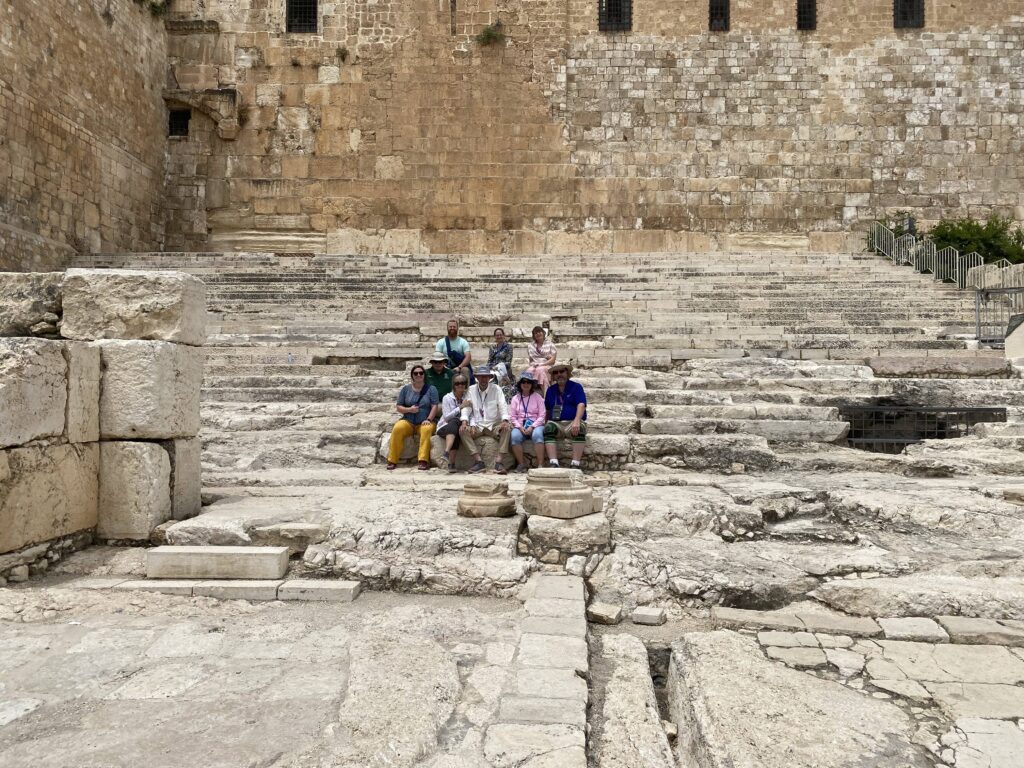
Very thankful for Drs Beth and Riedel for helping us find true places where Jesus may have walked. At both locations, we were the only ones there as everyone was putting so much attention on the celebrated sites.
+Jerusalem Day 3
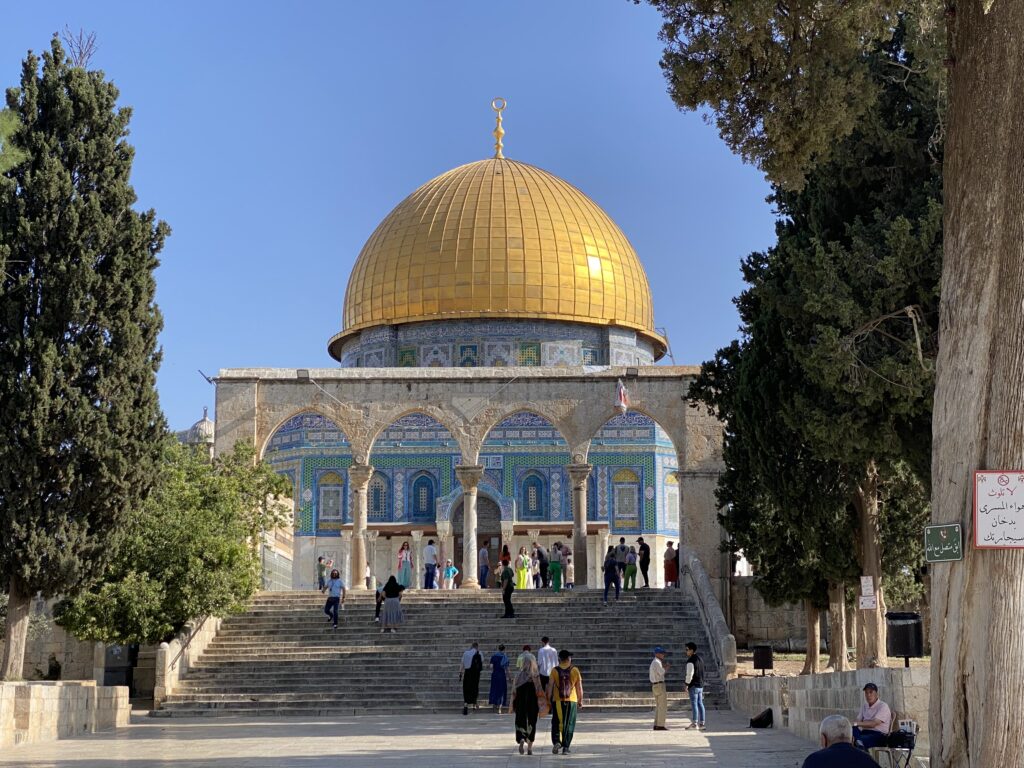
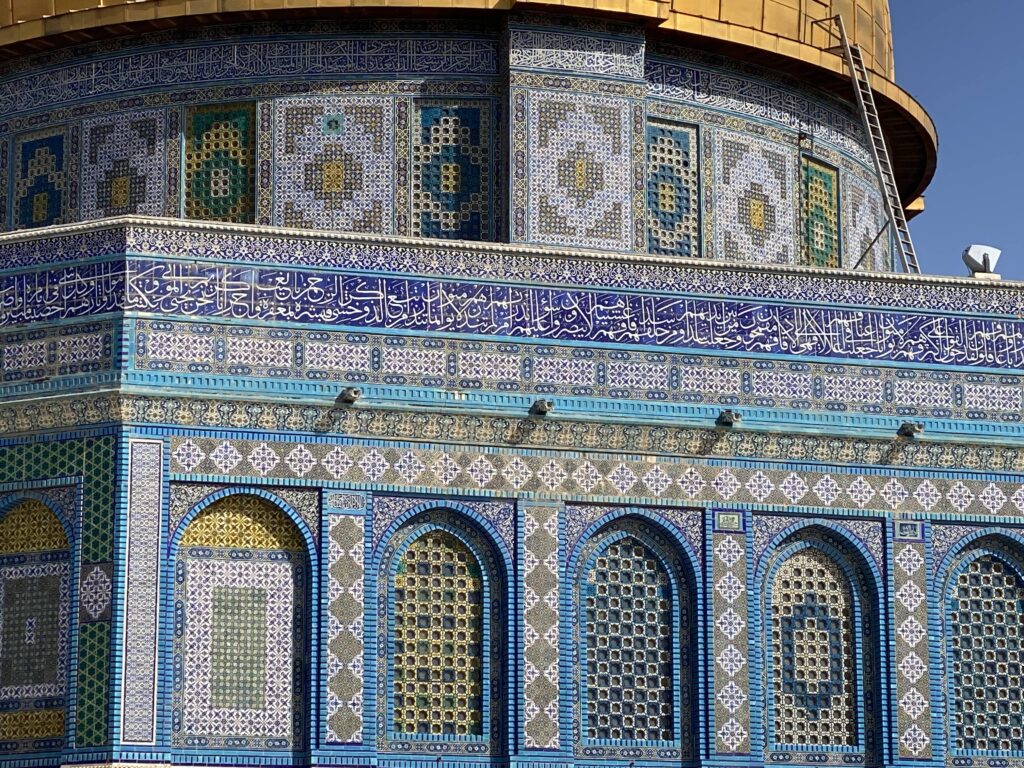
Below is the view of Old Jerusalem from the Temple Mount. The two gray domes in the background are the Church of the Holy Sepulchre.
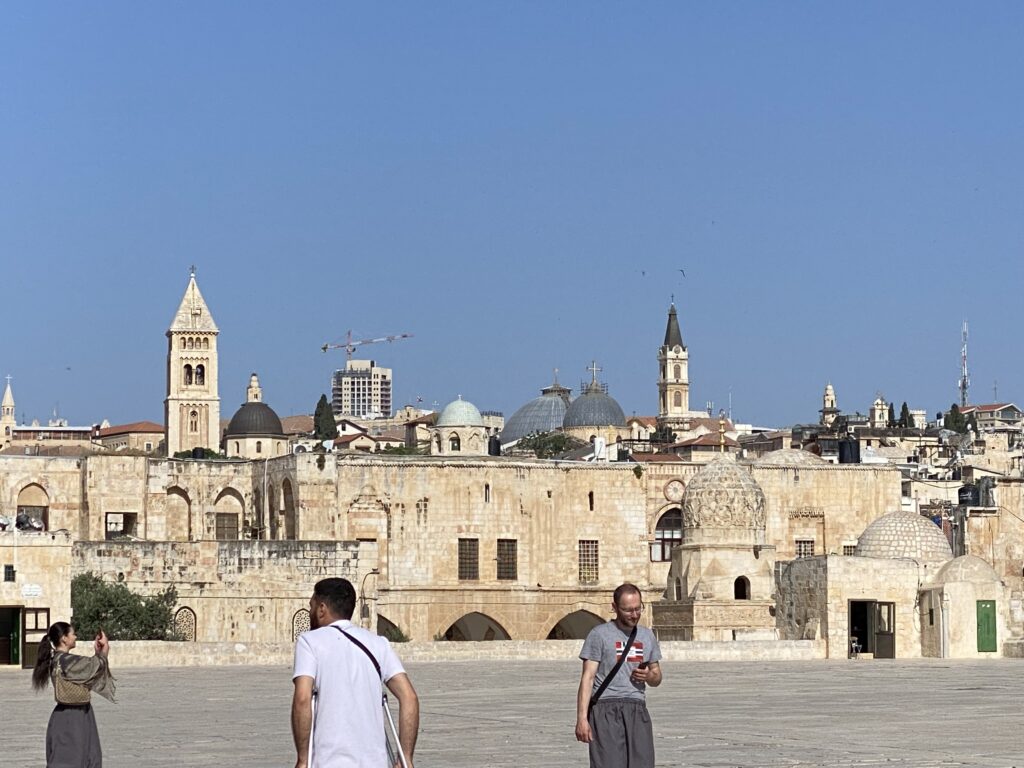
We had to go through a couple security checkpoints to reach Temple Mount. If you are not in the correct attire (if you are wearing shorts), they gave you a skirt to wear like the person wearing the green skirt with yellow stipe below.
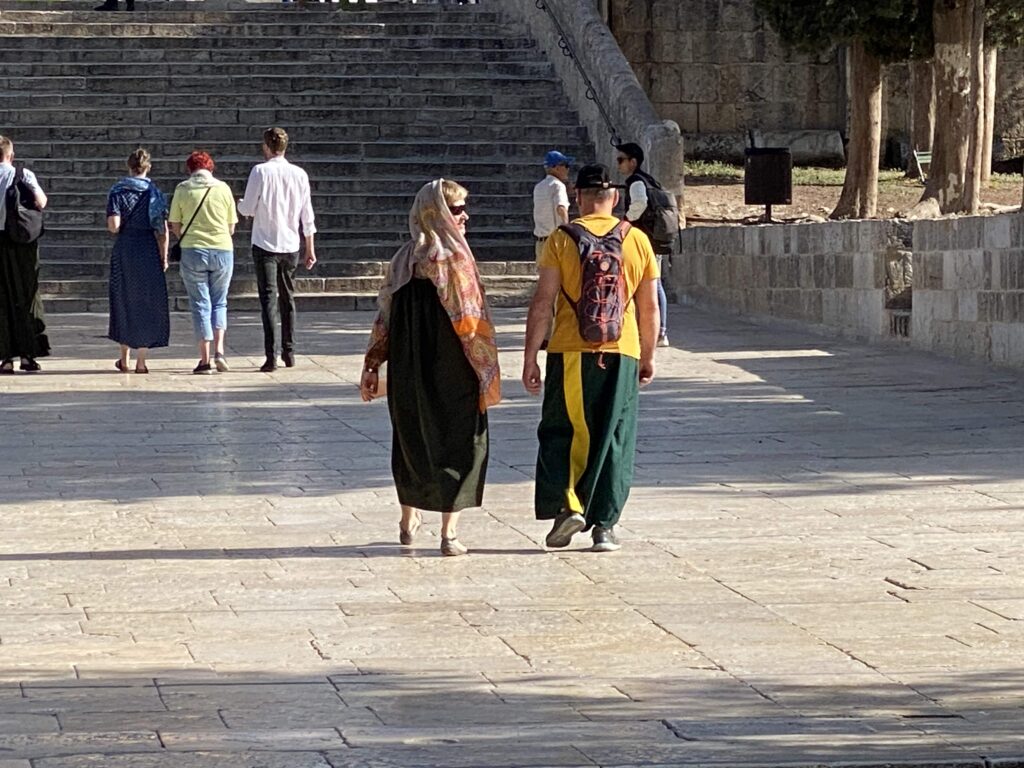
The Bethesda pool–below is just a portion as most are now covered by other buildings. It was interesting to learn how accurate the Biblical description of the Bethesda pools are to the real thing! Clearly, whomever was writing that had personal knowledge.
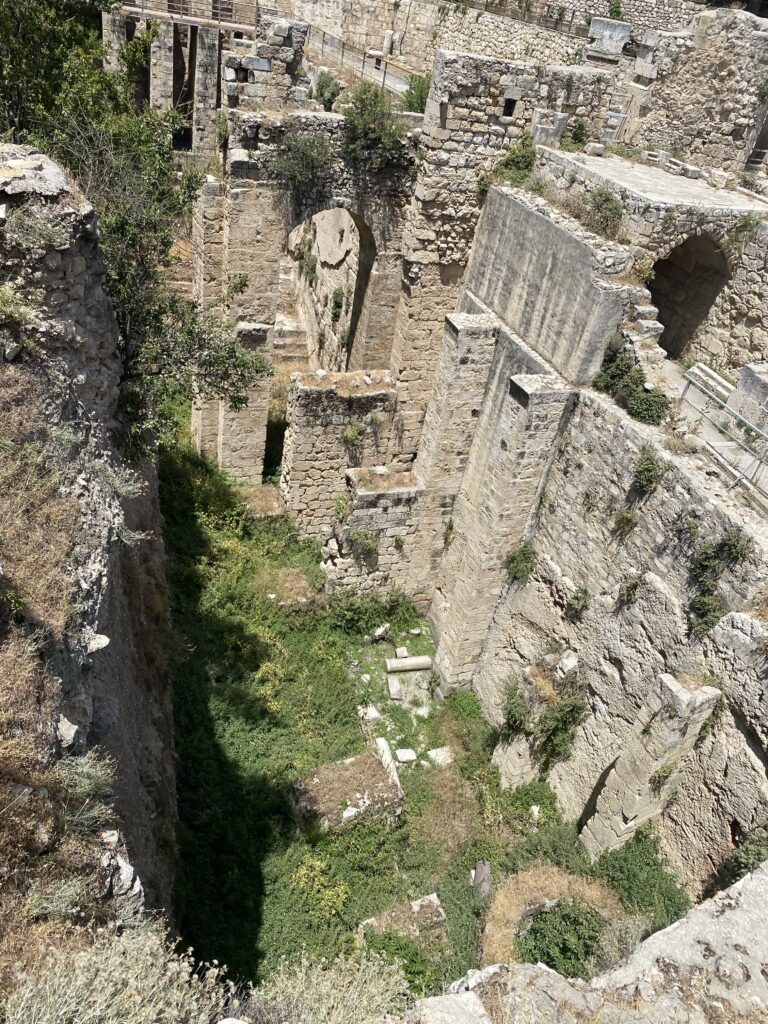
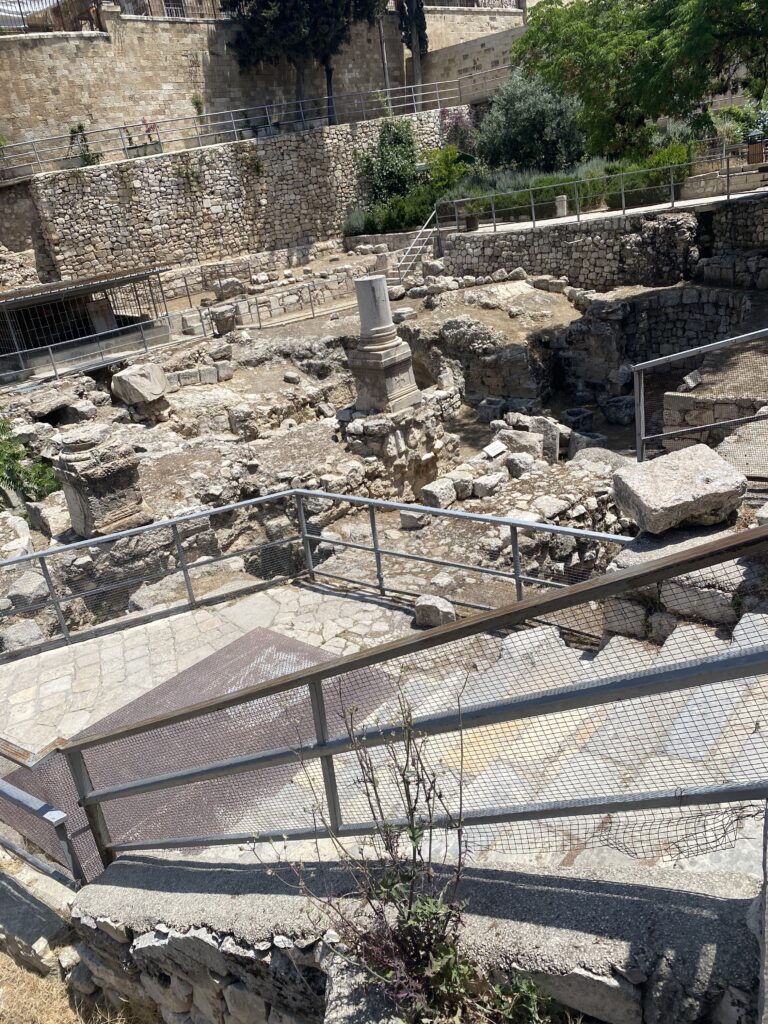
We also visited the Antonio Fortress. This was built by Herod the Great and named for Mark Antony. It’s chief function was to protect the Second Temple. This may have been were Pontius Pilot’s tried Jesus for high treason.
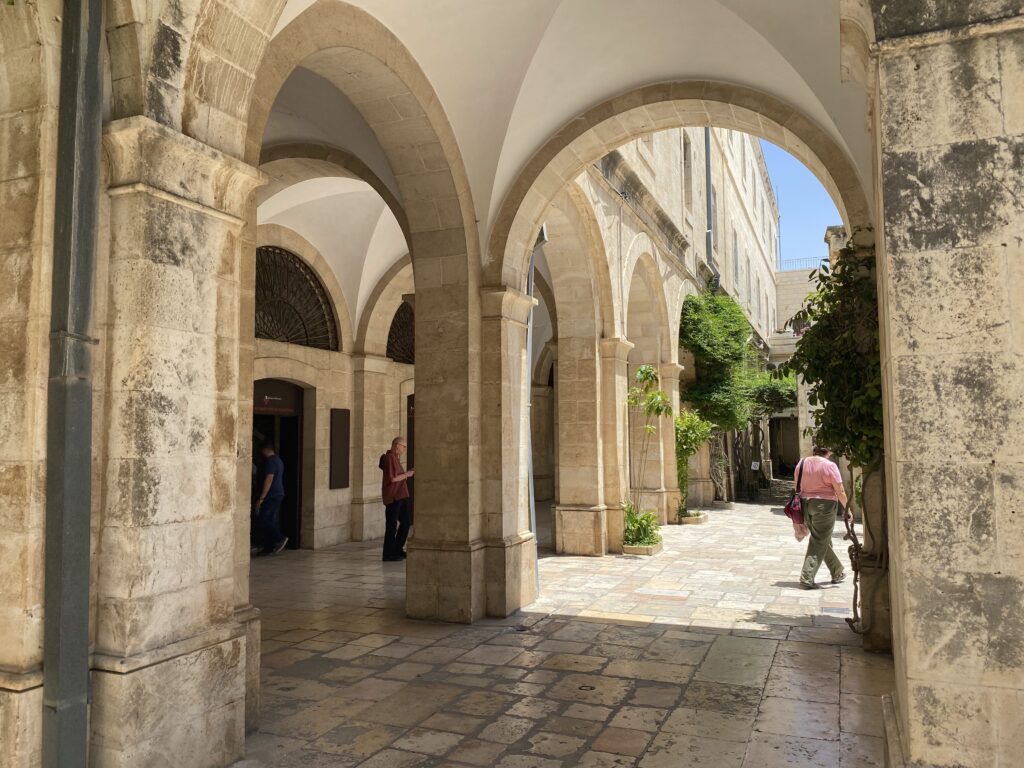
The Garden Tomb. They make a compelling case that Jesus ‘could have been’ buried here, but were also clear that no one really knows for sure where he was entombed.
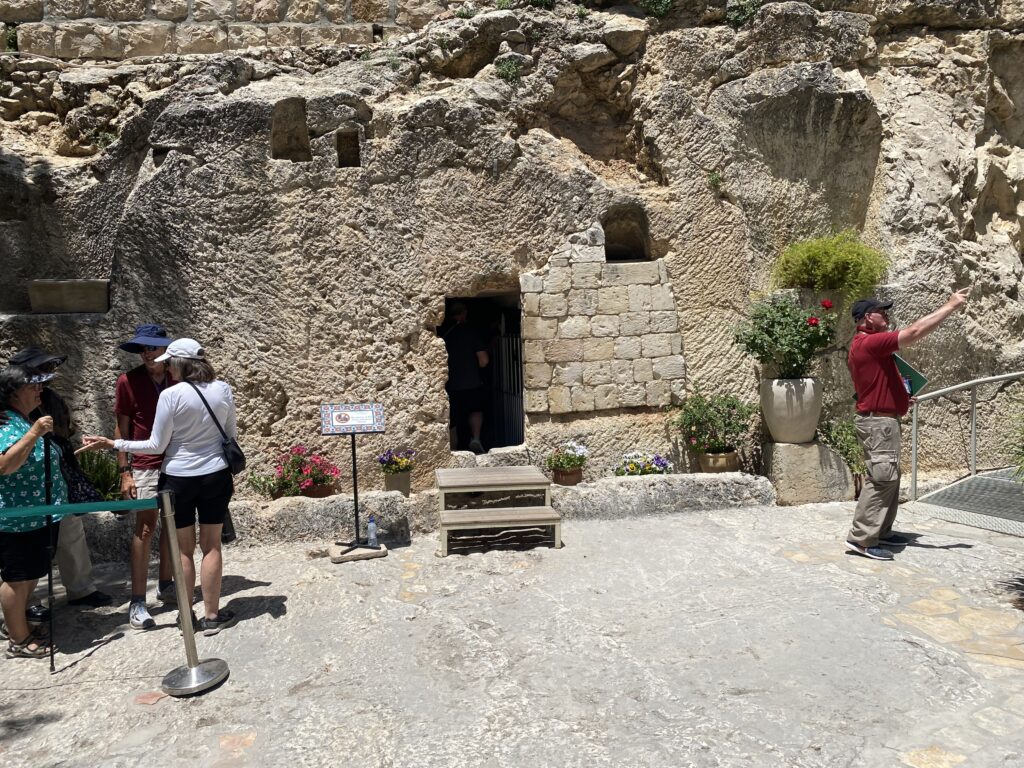
Taking a trip like this one with TU has been amazing! We are learning not only about our Christianity, but other faiths as well. We are understanding why we believe the way we do. As I mentioned yesterday, having New Testament scholars as our guides adds so much, providing a rich history with compelling narratives.
+Jericho, Hisham’s Palace
In Jericho, there is a sycamore tree. It is meant to symbolize the story of Zacchaeus climbing a sycamore tree to see Jesus.
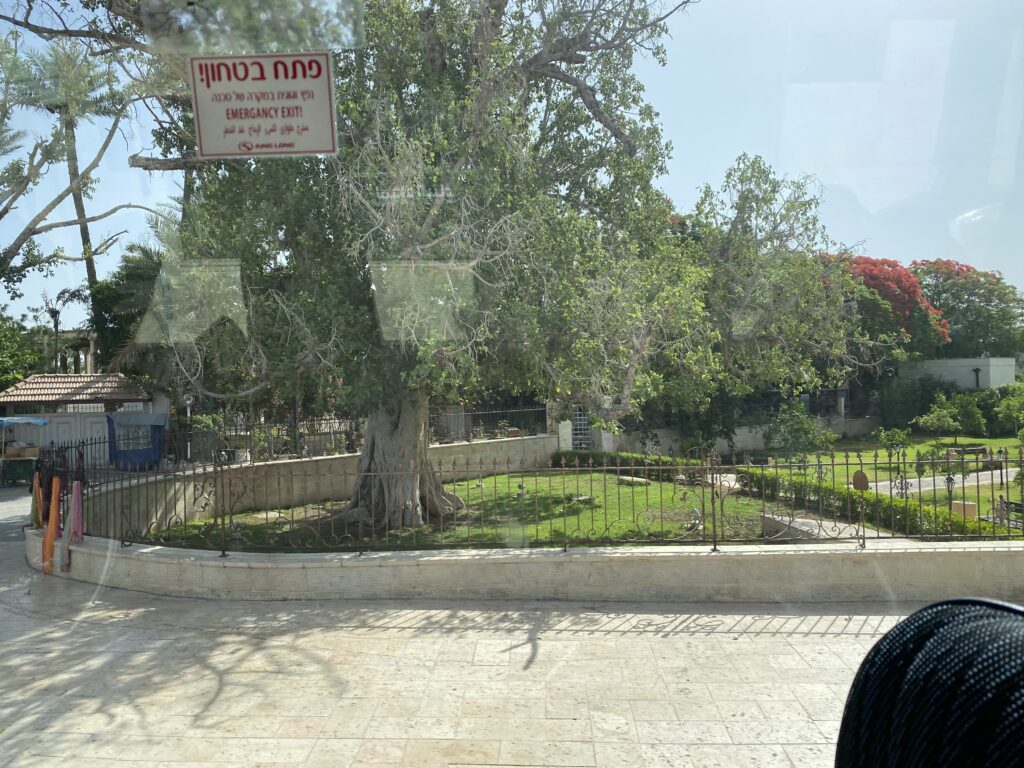
Hisham’s Palace ruins are close to Jericho. These ruins were built in the 8th century CE. Spreading over 150 acres, the site consists of three parts: the Palace, a bath complex and an agricultural estate.
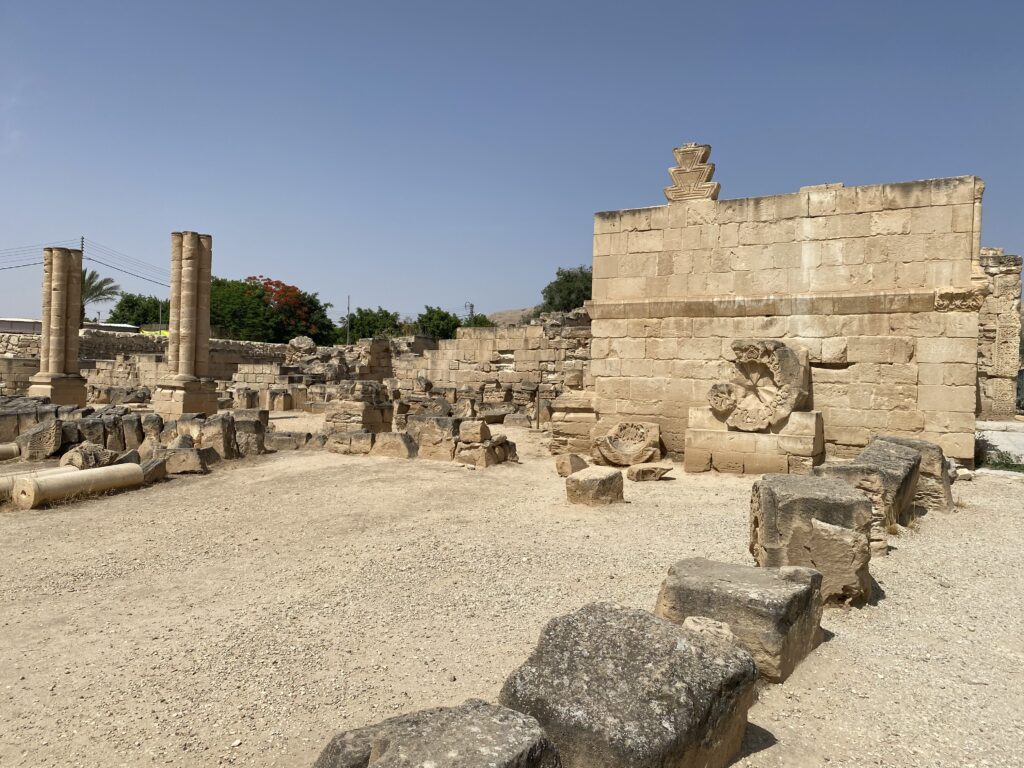
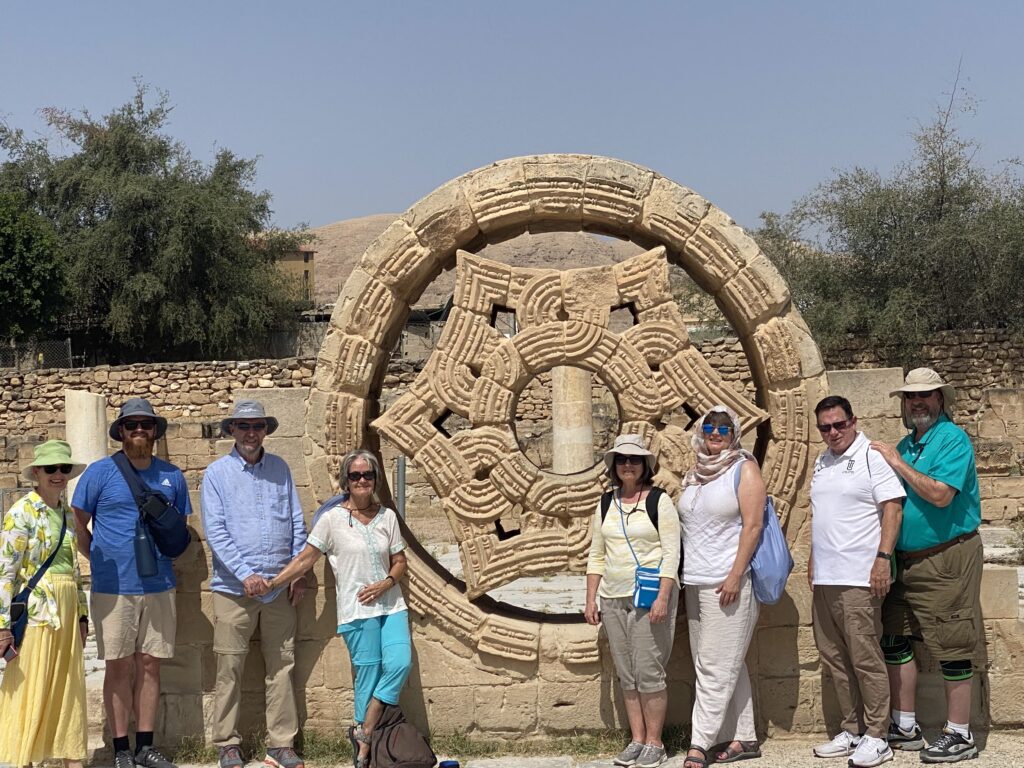
This Palace has the largest display of Mosaic floors than any other ancient site. The camera here does not do it justice!
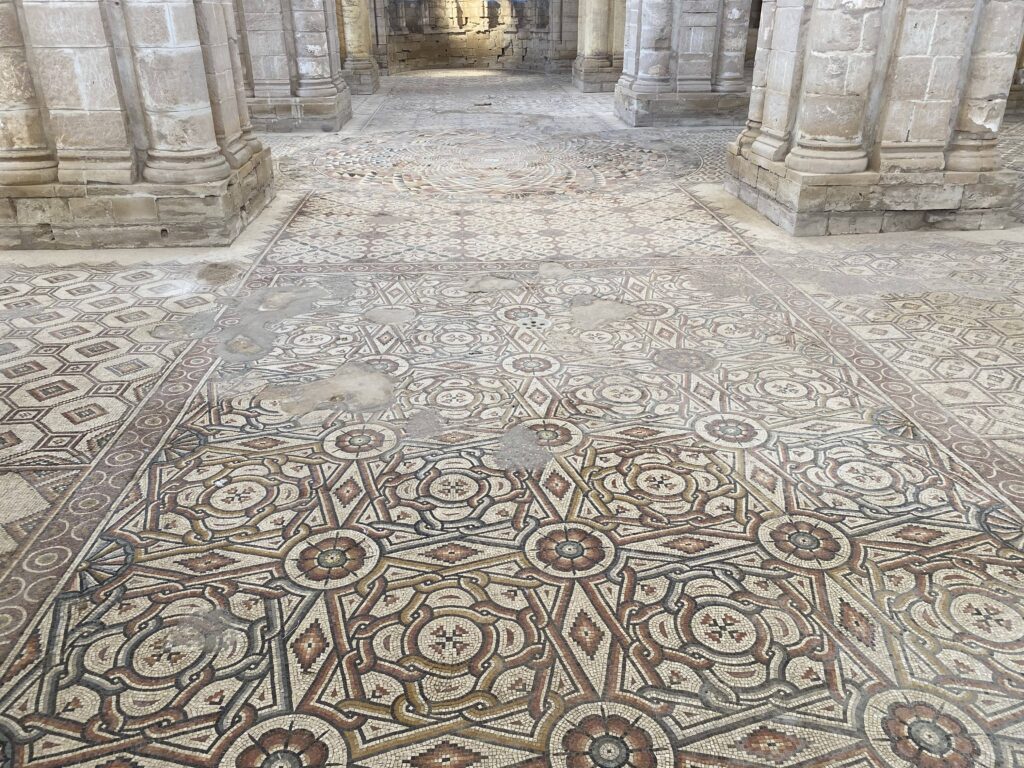
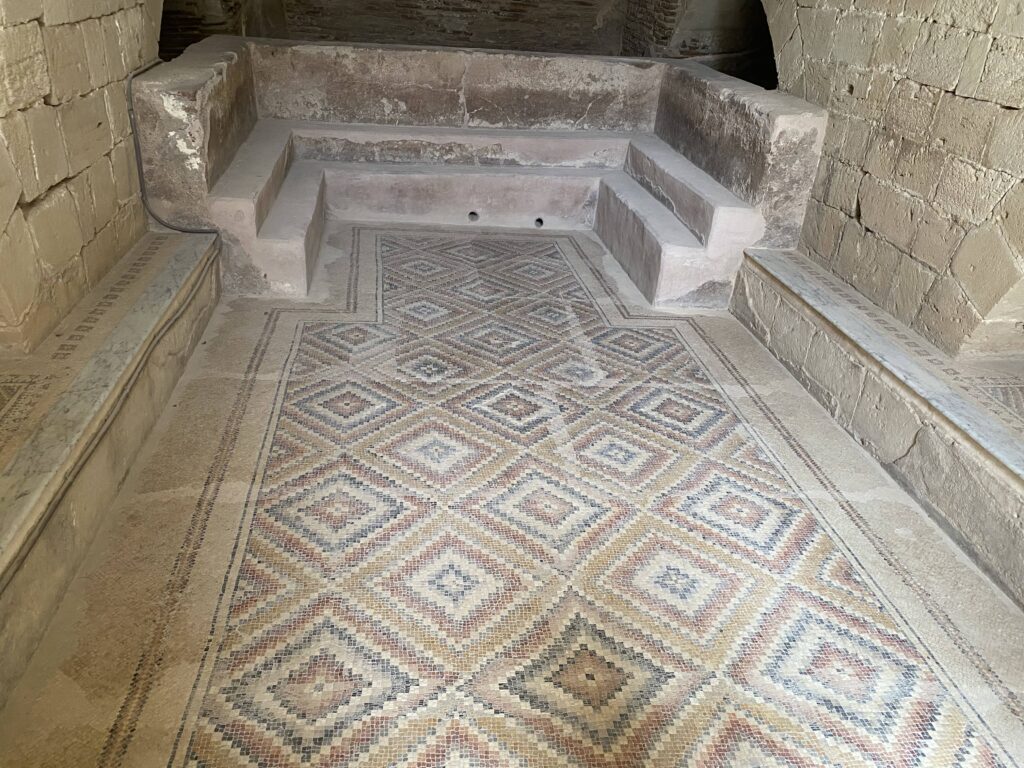
This beautiful mosaic is meant to represent the Tree of Life
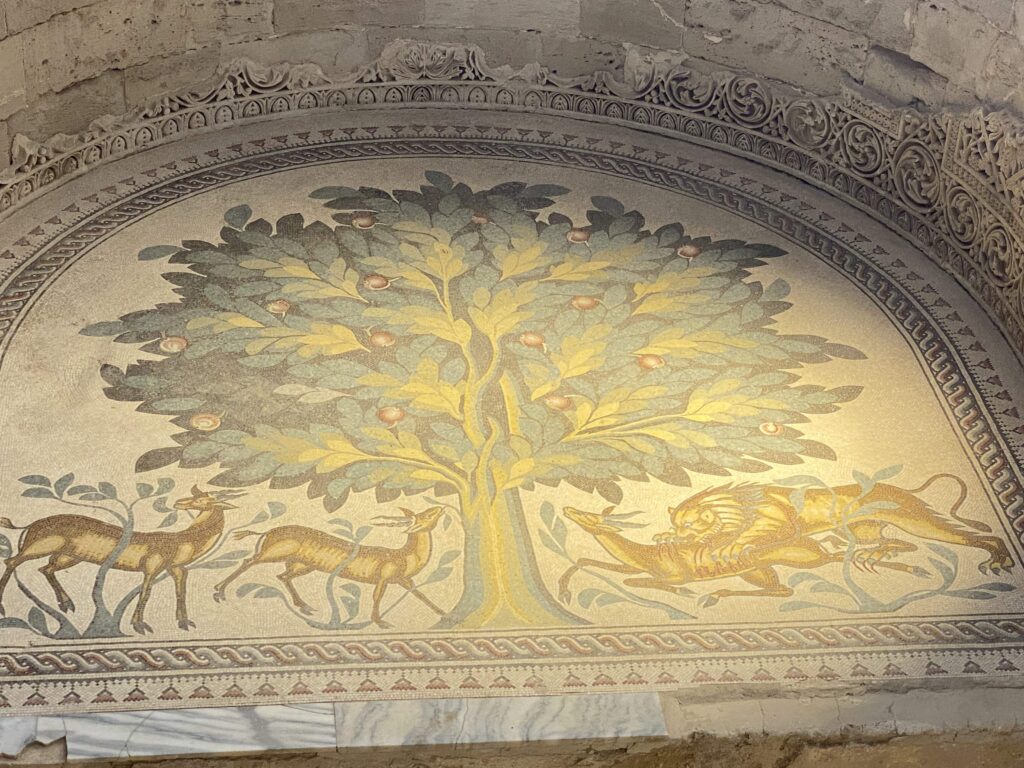
On to Jericho! Jericho is one of the earliest and continuous settlements in the world, dating perhaps from 9000 BCE. Below are pictures of the ruins.
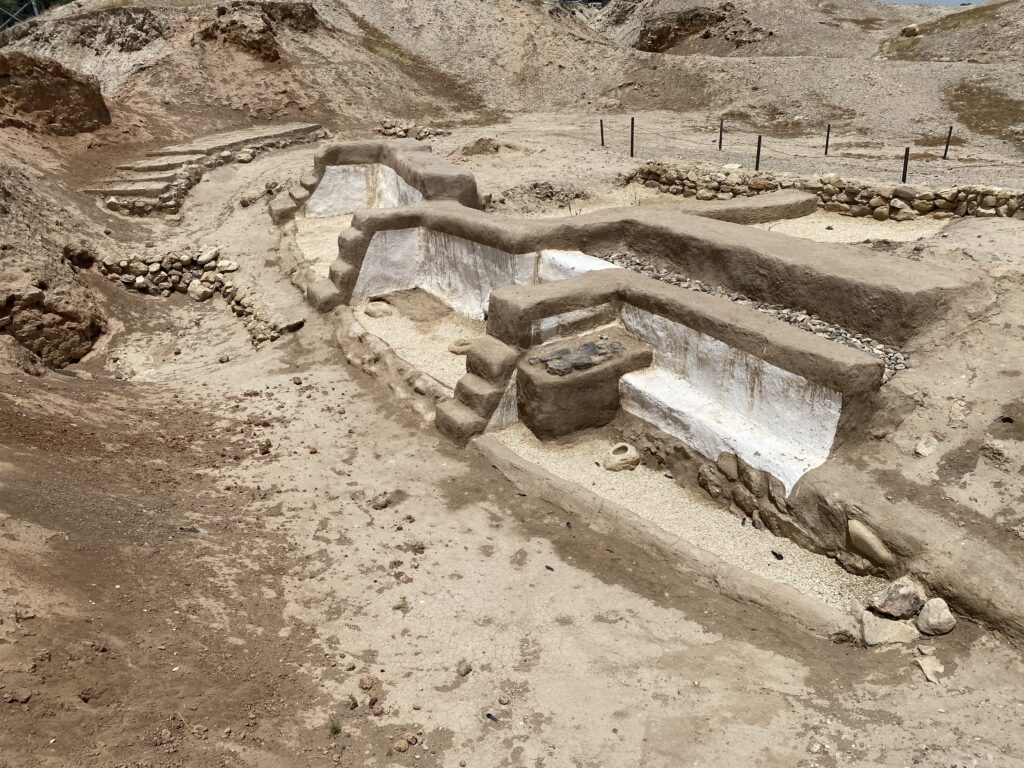
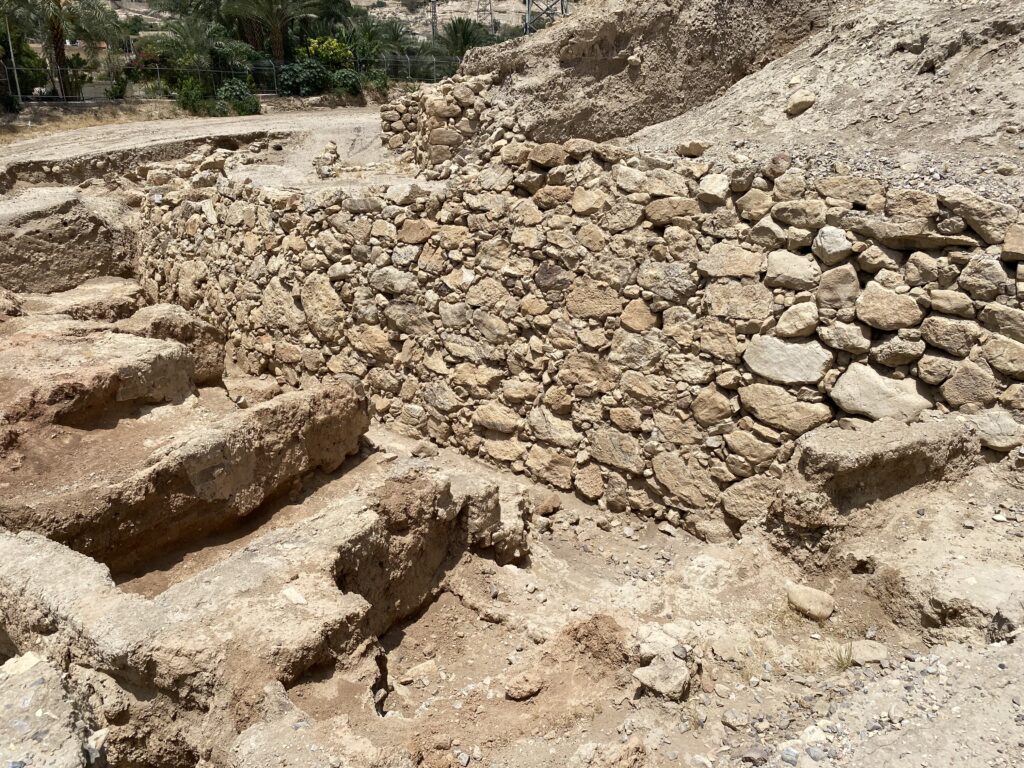
From Jericho, we travelled in to the Judean wilderness. The first picture below is one of a monastery that was built in the mountains where a river runs through the valley. The river runs from Jerusalem to Jericho and is more than likely the route used during Biblical times.
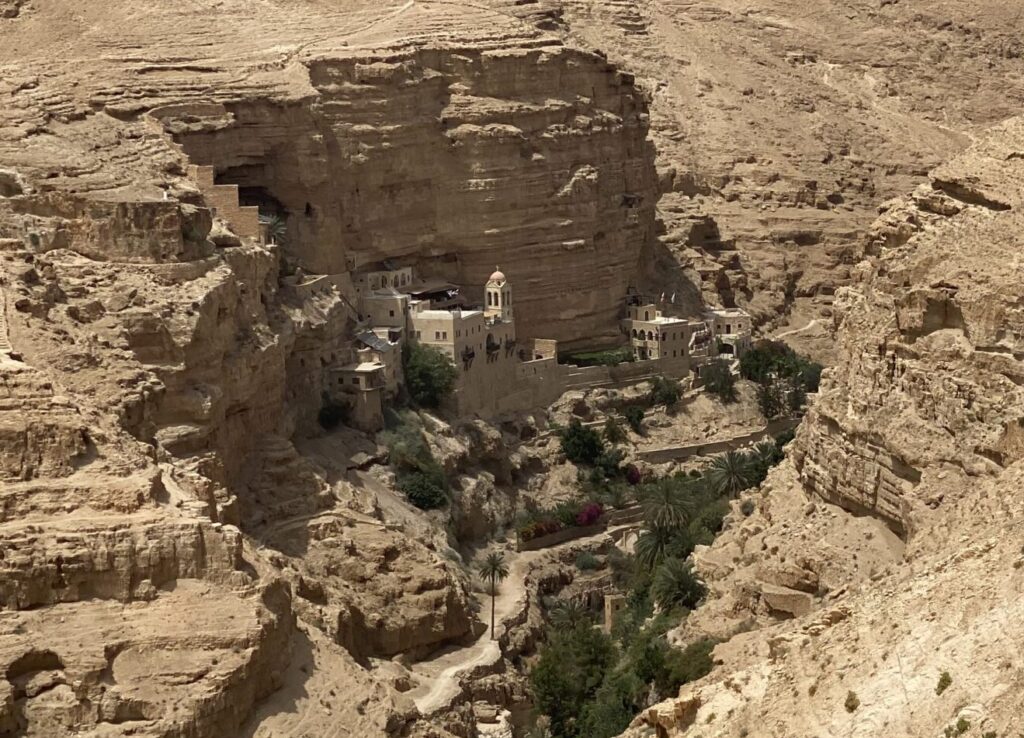
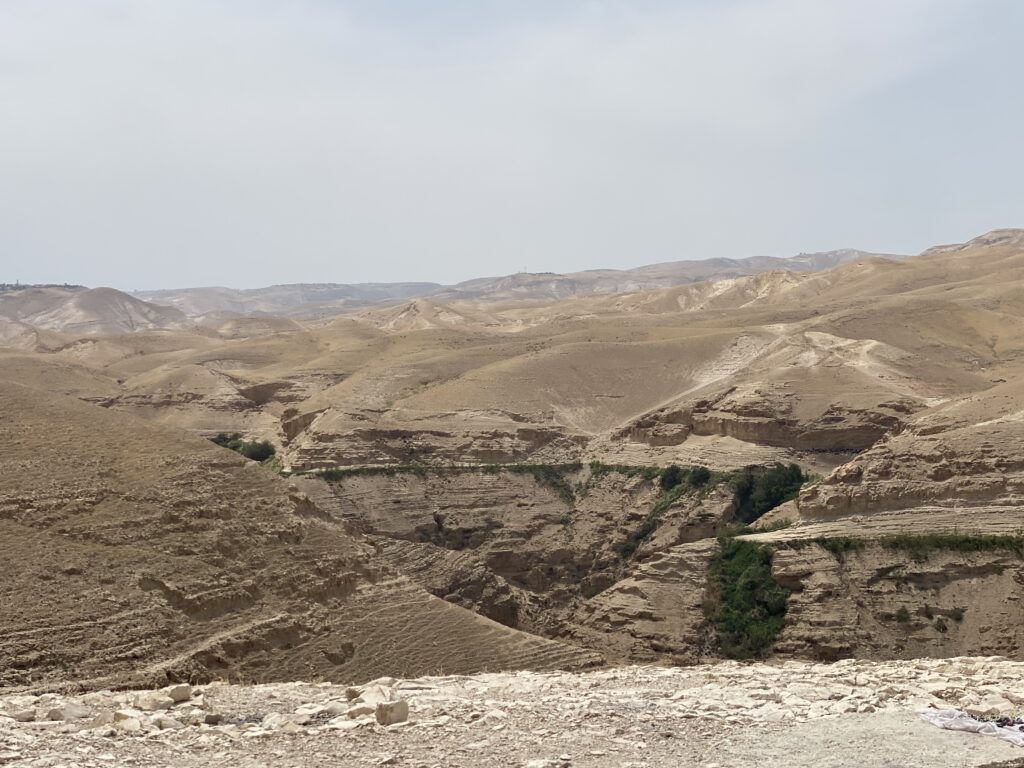 This was our last day in Israel. Off to Turkey!
This was our last day in Israel. Off to Turkey!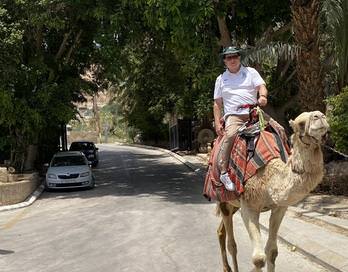
+Istanbul
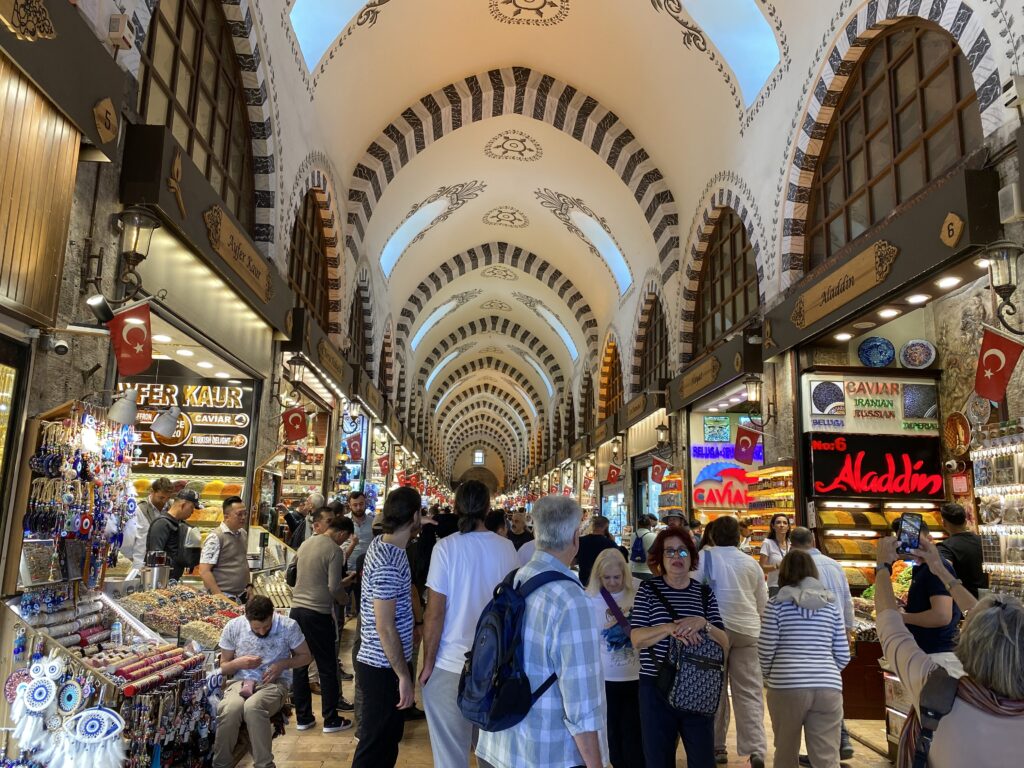
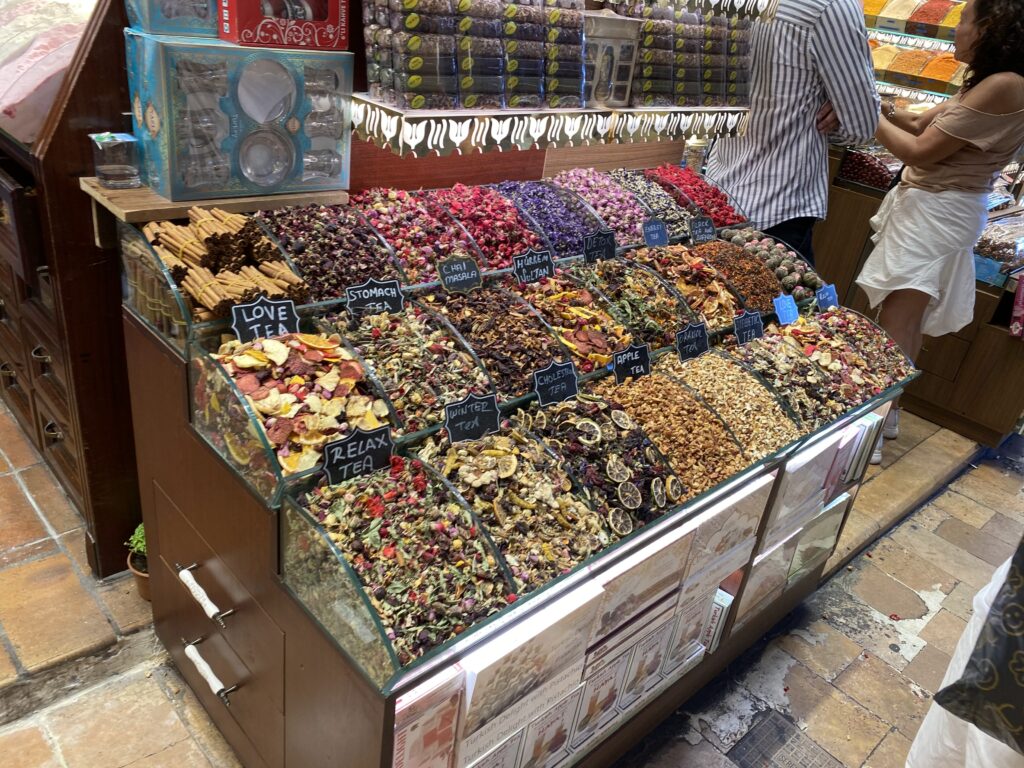
We also took a boat ride that allowed us to see the architectural differences between where Europe and Asia meet. The two differences can be seen on the opposite cost from each other. Istanbul has a population of more than 18 million people. Istanbul is important to Christianity because Constantine, the Roman Emperor, moved the capital of the Roman empire to Istanbul. With his conversion to Christianity, he helped spread the message world-wide.
On Sunday we visited an area that was once a Hippodrome. Roman horse and chariot racing took place here (think movie Ben Hur). The Hippodrome is a long oval using a little imagination you can see how the tree line on each side would be the outside with the obelisk in the center of the track. Many activities happened at hippodromes from races to community events, including public humiliation for conquered foes.
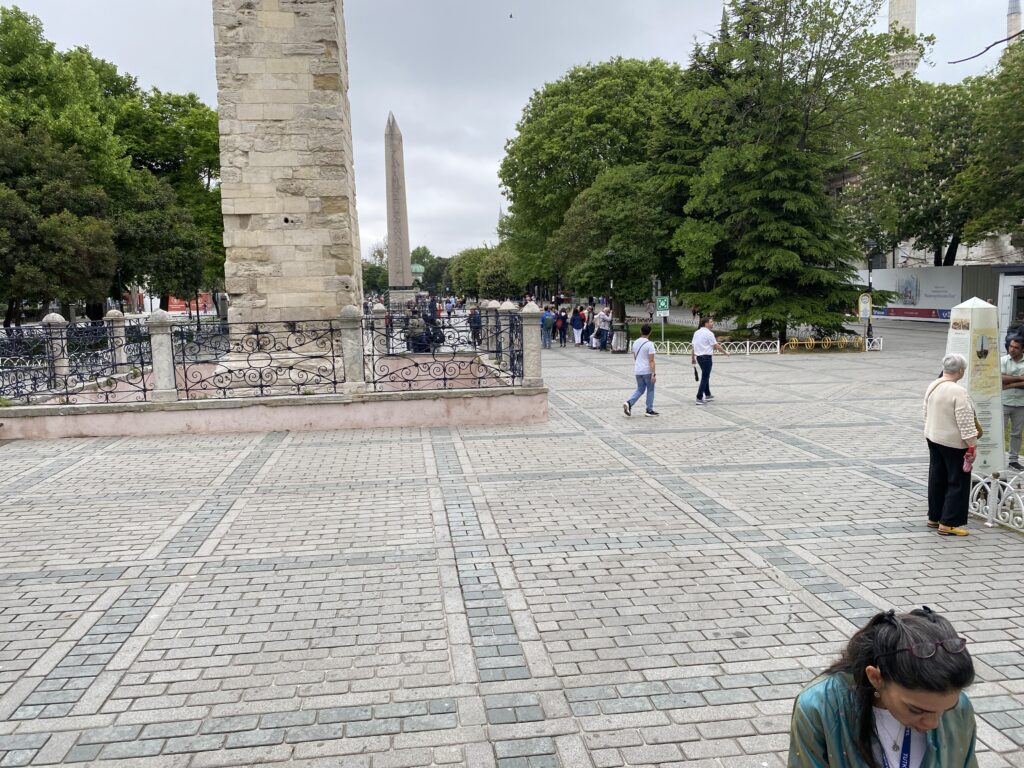
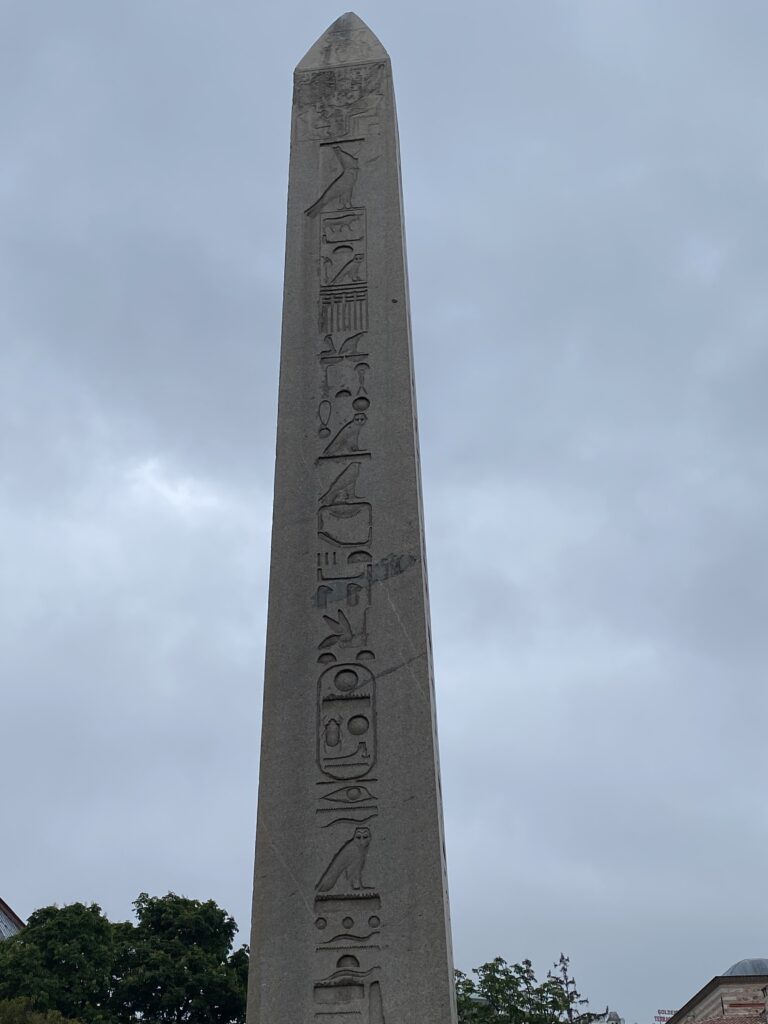
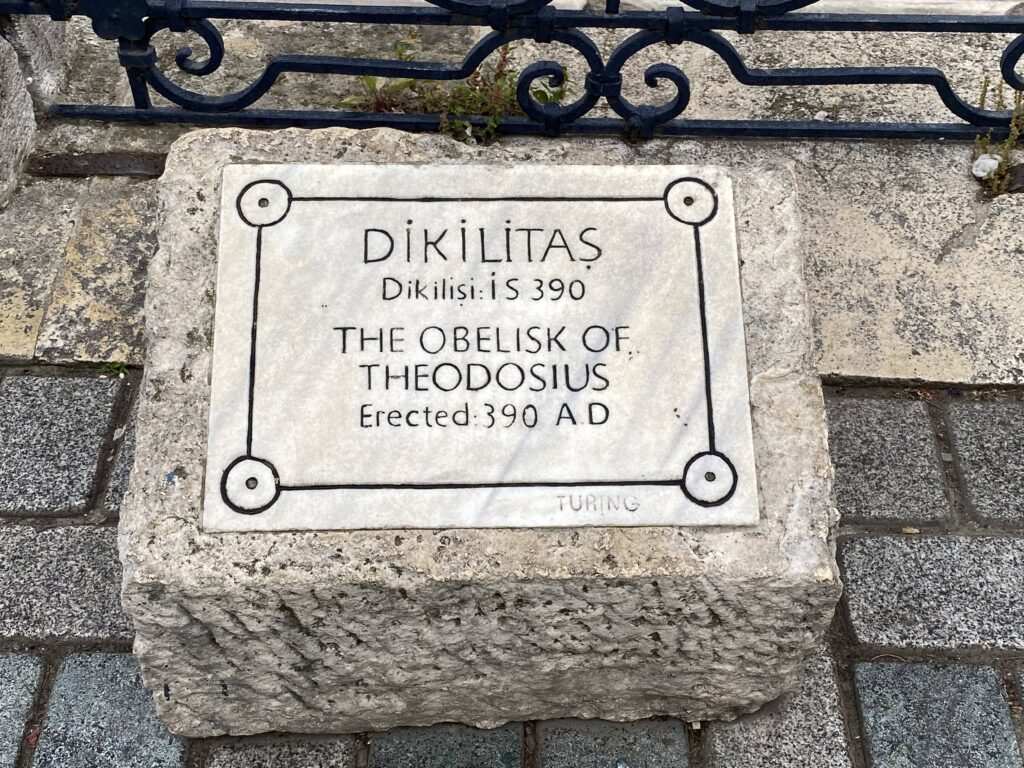
We visited a mosque that for many years was a church, then a museum. It is called the Hagia Sophia. It has recently been converted to a mosque and some of the important Christian mosaics on the upper level are no longer on display. This was quite disappointing to our group especially recognizing the important of the Byzantine Empire and it’s relation to Christianity.




We also visited a market for Turkish rugs and of course saw a demonstration of how they are made. It takes 6 months for a medium sized wool rug and 1-3 years, depending on the size, for those made of silk. The artist pictured has a true gift!
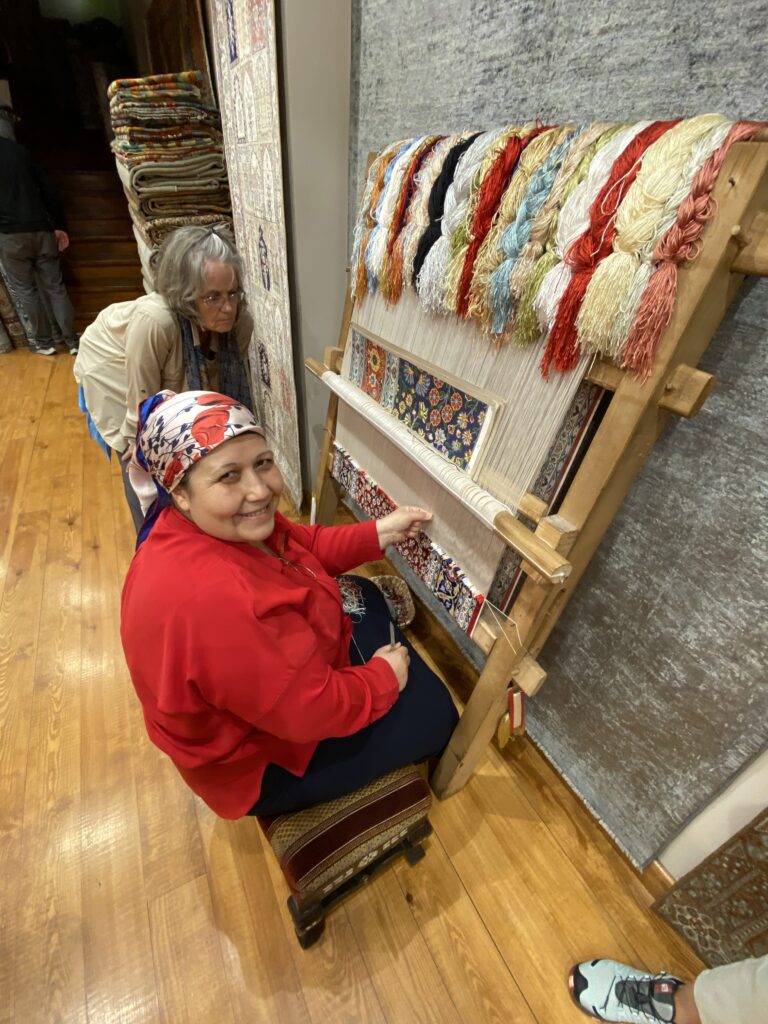
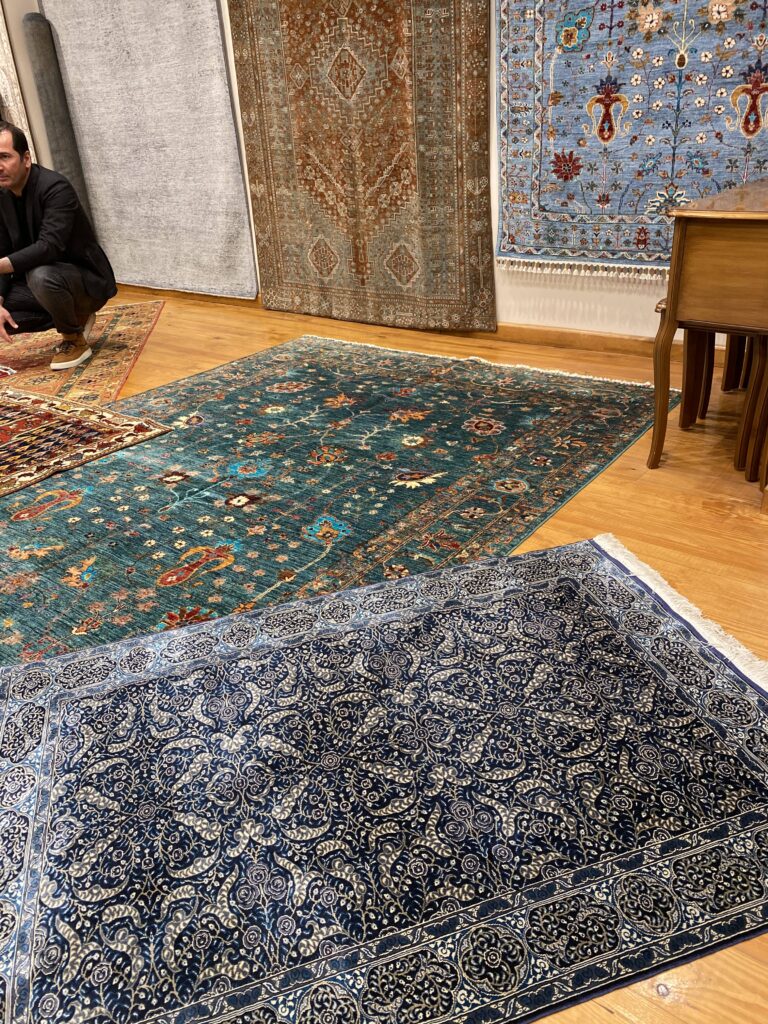
The Basilica Cistern is ‘off the chart’ amazing. It has been in James Bond movies and Dan Brown’s book movies. It has 336 columns, unbelievable square footage and incredible height and beauty. And it is just a cistern! The Basilica Cistern is the largest, ancient underground cistern in Istanbul. It was built by order from Emperor Justanian in 535 CE as a project of rebuilding the cistern after riots. Cisterns in general were spread everywhere around Istanbul during Byzantinian times and provided water for use of residents.


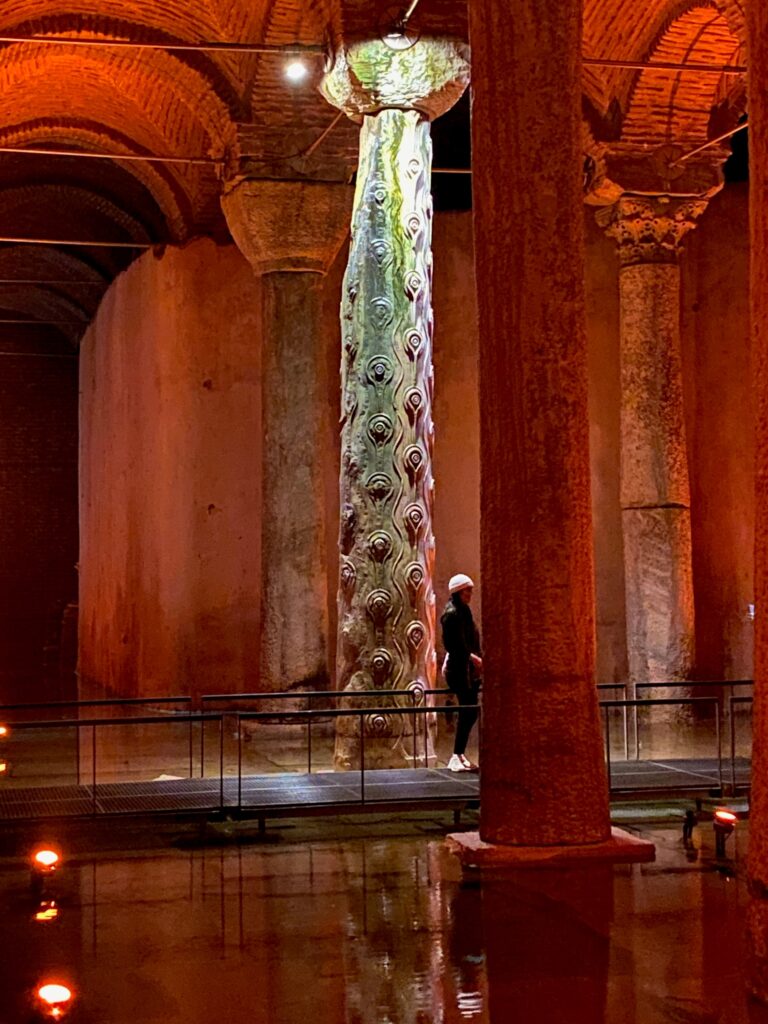
The ‘column of tears’ (above) is part of the cistern to recognize those that died during it’s construction.
So, with my final entry in this blog, I would like to share a quote from Dr. Griggs, one of our team members. “Meaningful memories are never about the places, but they are about relationships.” So yes, I visited incredible sites and history that was educational but I do agree with Dr. Griggs. The relationships formed through this experience will last a lifetime. We are taking about our next expedition. Join us and have your life changed!

